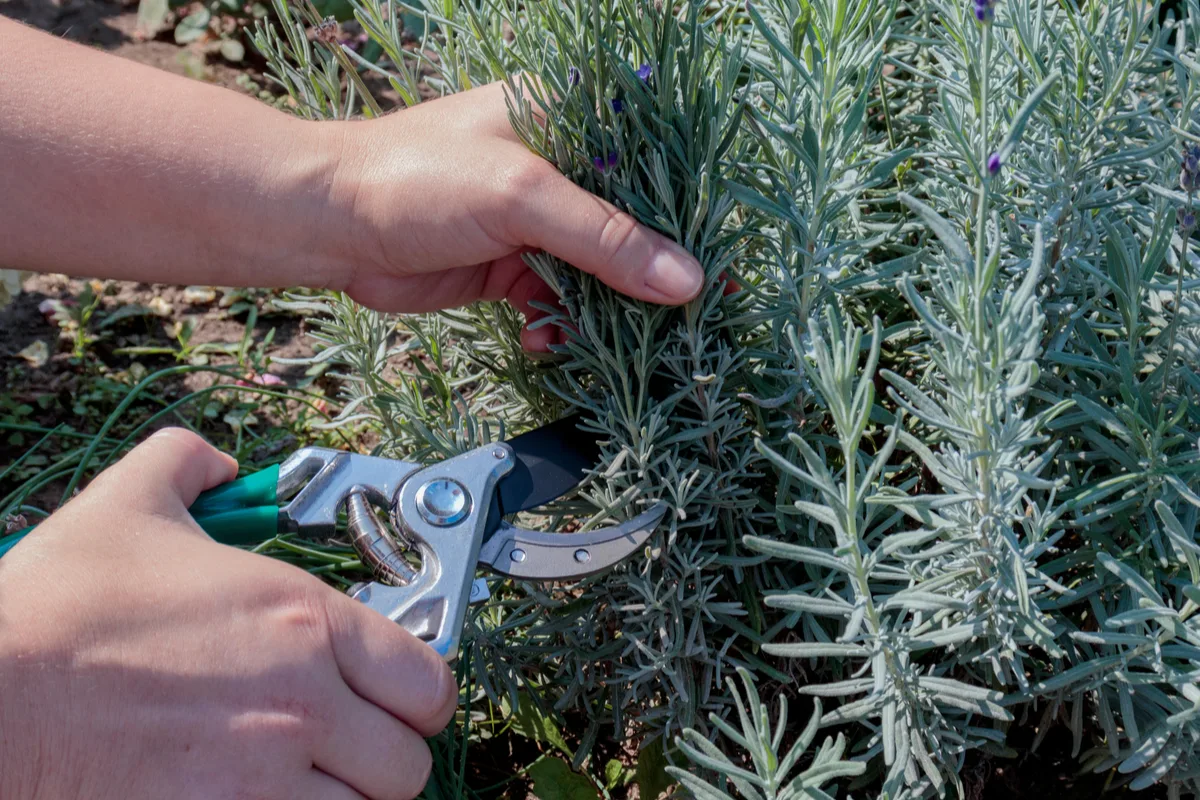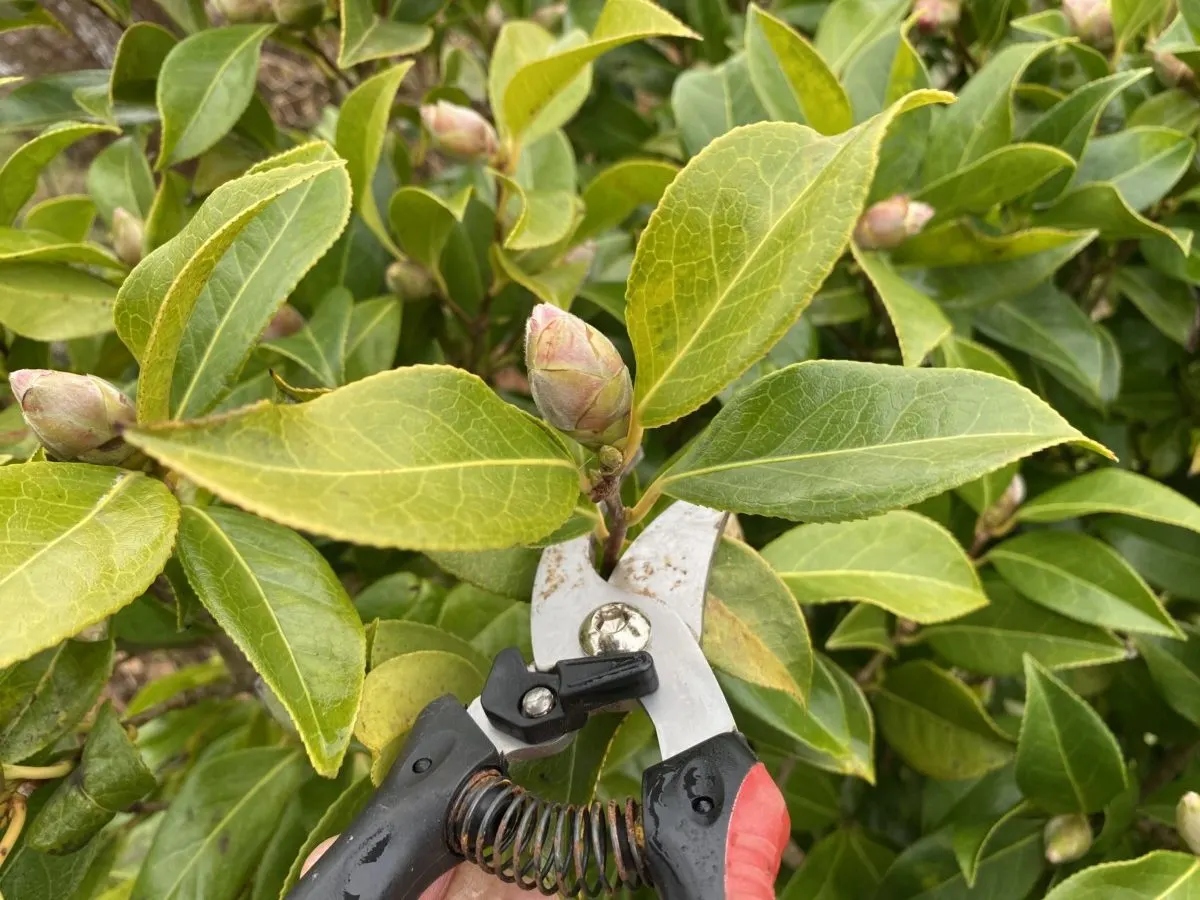
I’m writing this article in early February and the countdown to spring is on. I can almost smell the change of seasons in the air. The days are getting noticeably longer. And even though some days are bitterly cold, the bird concerts outside my window are starting earlier and earlier.
The urge to start seeds is tugging at my sleeves (or rather at my gardening gloves) as is the temptation to start pruning. After all, when do you prune if not in spring?
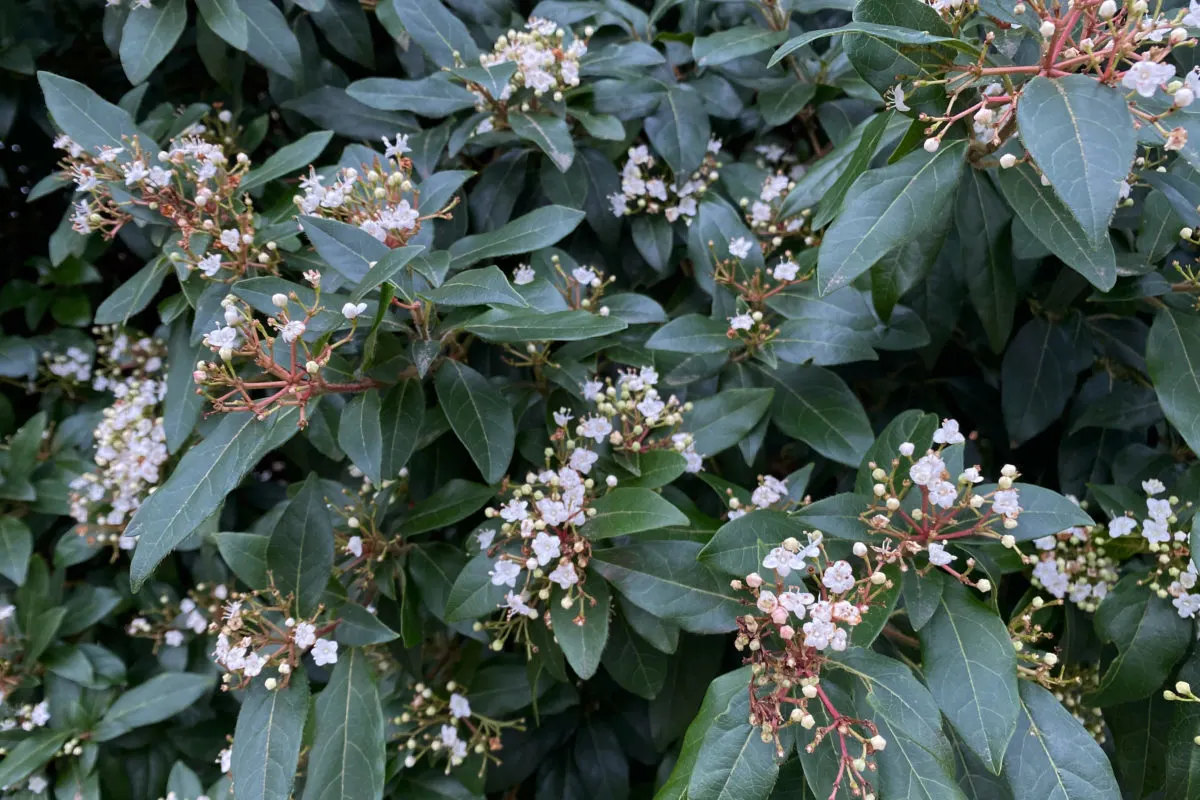
If you, too, are done with your winter pruning and feeling the itch to start on spring pruning, please have a look at the list that follows before you start. There are some plants that we simply shouldn’t prune in spring. I’ll tell you about the most common ones and why we should postpone pruning at this time of year.
Why shouldn’t I prune these plants in spring?
What the plants on this list have in common is the timing of when they form their buds and the timing of when they flower. We don’t cut back these plants in spring because they all flower on old stock.
Some of them already have visible buds – think of magnolias, camellias and deutzias, for example. Others, such as viburnum, may have already started flowering and will continue to do so as late as early May. While a third category, with rhododendrons and daphne at the top of the list, is better left unpruned altogether.
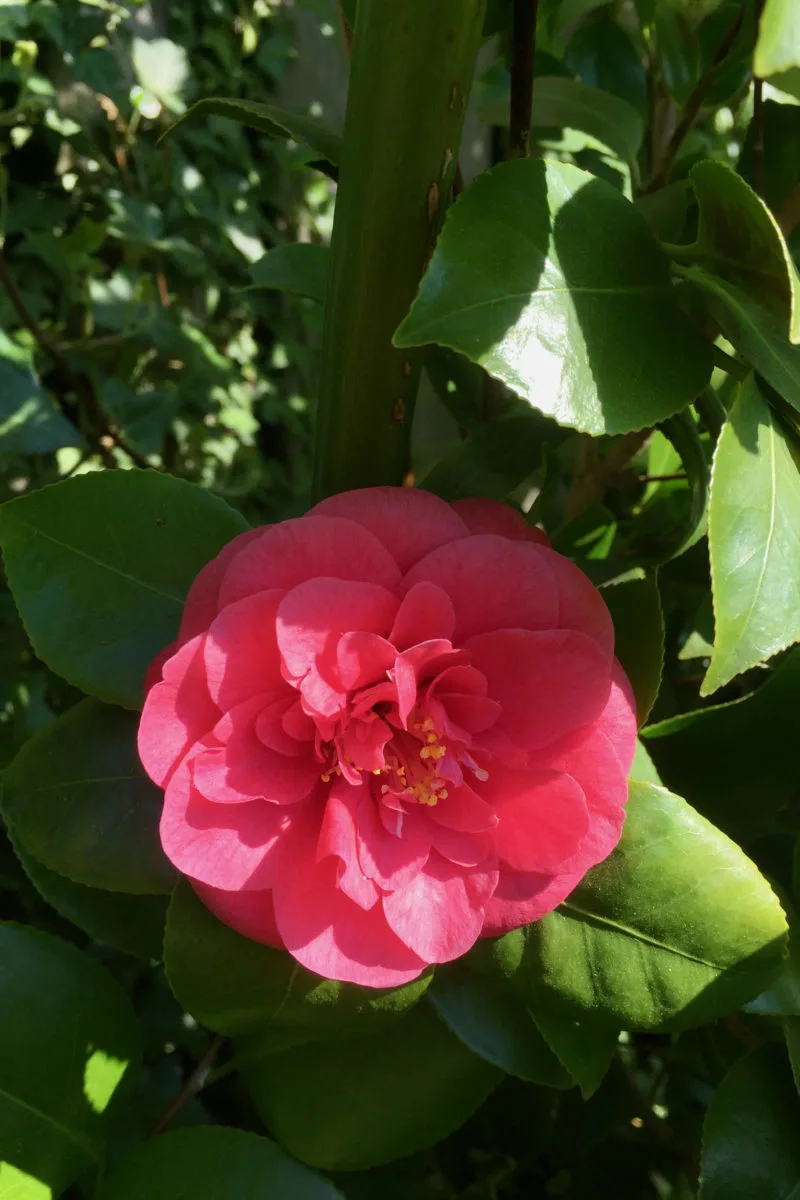
Before we get started, it’s worth noting that our readers find us from all over the world. And no matter how much we would like it if our gardening advice applied to everyone everywhere, that’s simply unrealistic.
Since we all have different (micro)climates – hence gardening zones – to contend with, our gardening timing might differ slightly. Or, indeed, not so slightly at all. You can use the information in this article as a starting point to do more localized research and find out what applies to you.
Here are the most popular plants that don’t need spring pruning.
1. Forsythia
I’ll start with forsythia because it’s been on my mind lately. Maybe because I’ve been spotting it everywhere. It’s either peeking from behind my neighbors’ fences or scattered in thick clumps around my local parks. It’s getting ready to open up its sun-yellow flowers all over the city.
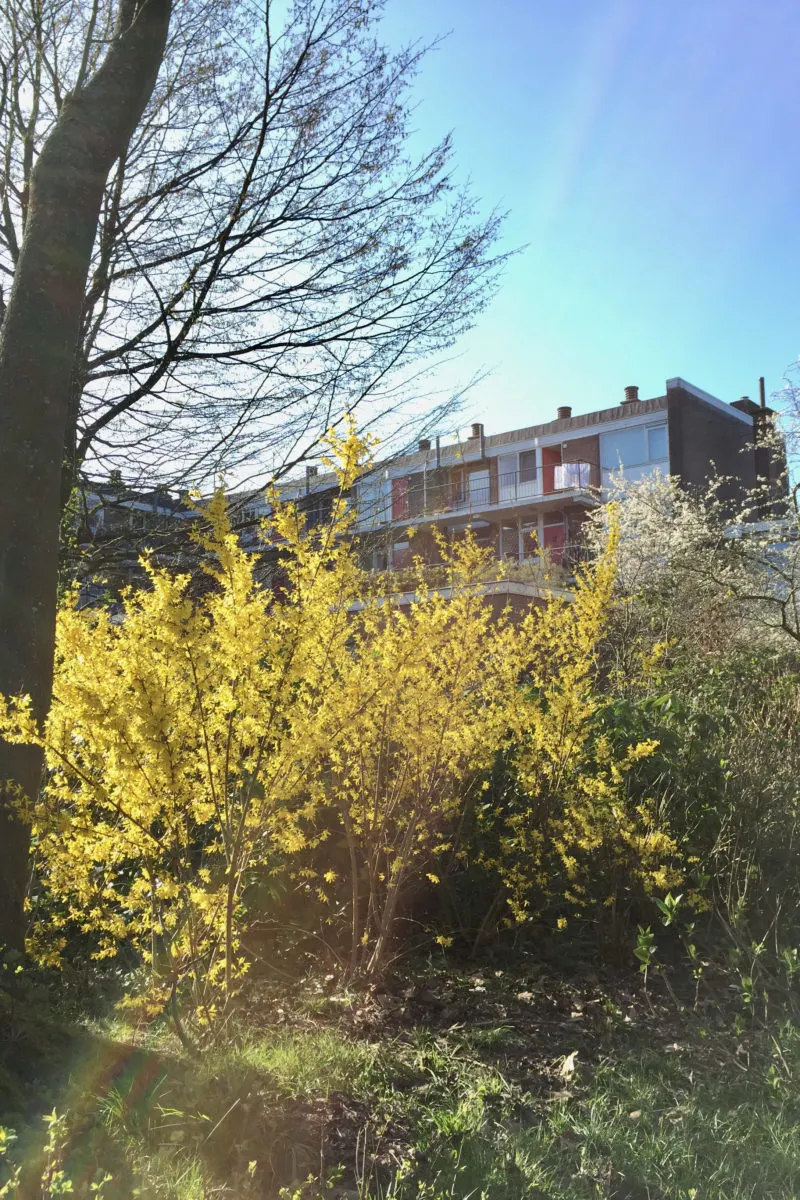
In temperate climates, forsythia blooms in late February, March and even early April. So any pruning that you do before that will remove this year’s flowers. It’s better to wait until all the blooms are gone, then trim back some of the branches that are leafing up.
We generally prune forsythia in line with how we want to shape it. If you are looking for a rounder, bowl-shaped shrub, cut back some of the middle branches. If you prefer a shrub that stays small and compact, cut back just the top of the plant. Start with about a fifth of the total height, or whatever is sticking out.
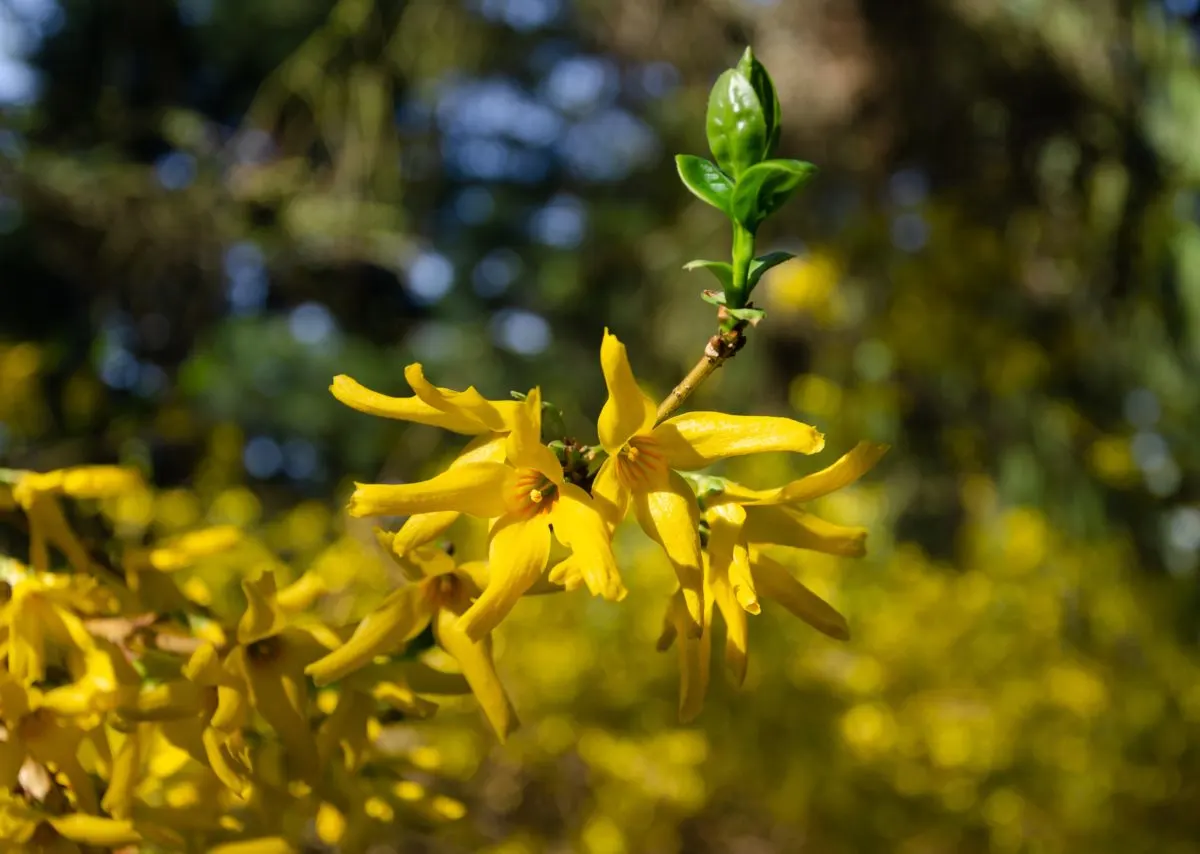
As for the oldest branches, you can trim them back down to the base of the shrub.
The trick with pruning forsythia is that you can’t procrastinate too long before doing it either. You certainly shouldn’t wait until fall to prune this shrub because the new buds will have already formed by then. Make a note in your gardening calendar to prune it in May or early June, depending on what climate you’re gardening in.
2. Orange-ball tree (Buddleja globosa)
If just reading the word “buddleja” sends a shiver up and down your spine, rest assured. I am not talking about the “butterfly bush.”
True, we do use the word “buddleja” – or the anglicized “buddleia” – to refer to this much maligned ornamental shrub. But the butterfly bush (Buddleja davidii) is just one type of buddleia common with gardeners. You need to prune this one in winter in order to keep it in check.
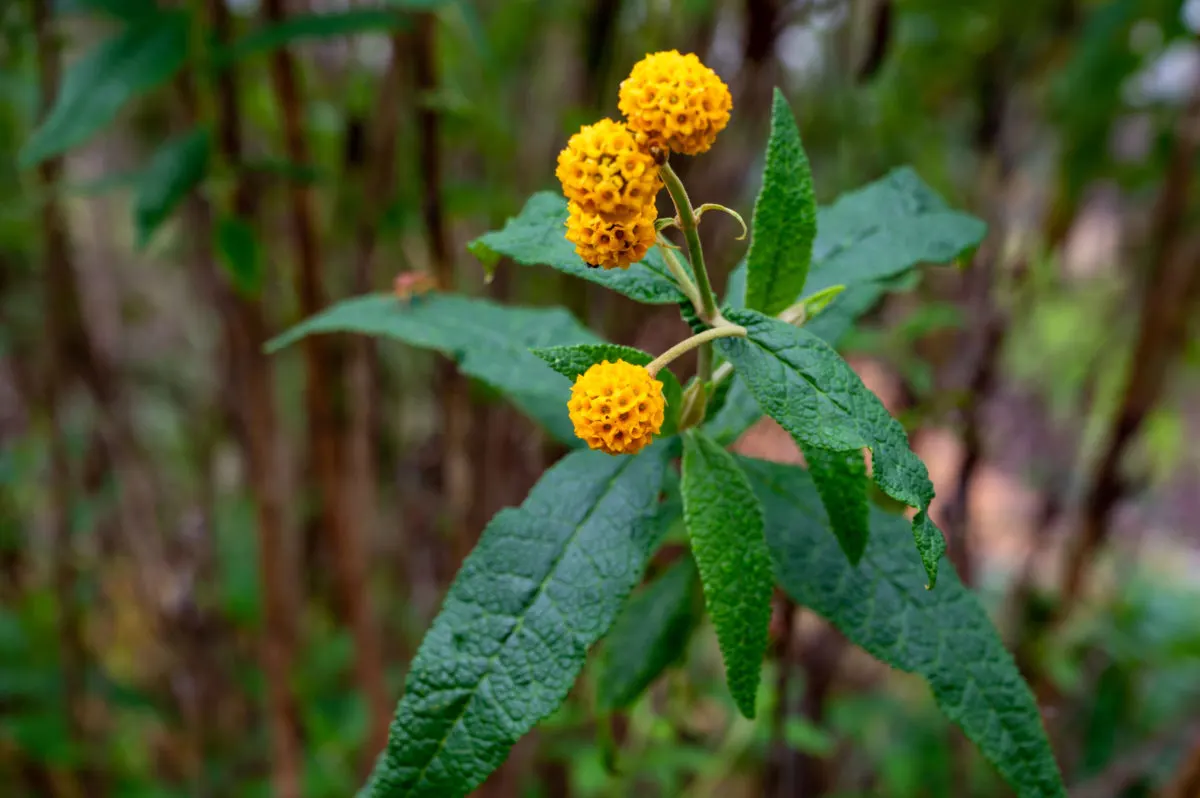
But here’s the botanical plot twist: Buddleja globosa (the orange-ball tree) was here first, almost a century before its infamous cousin, B. davidii.
The seeds of the Buddleja globosa are wingless. This means that, once shed, the seeds don’t travel far enough to make this plant a problem. So if you’re looking for a butterfly bush alternative that’s guaranteed to be just as popular with pollinators, try the orange-ball tree. The nectar produced by the striking orange flowers will bring all the butterflies to the yard.
Another difference between the two is that Buddleja davidii blooms on new wood, while Buddleja globosa blooms on old wood (last year’s growth).
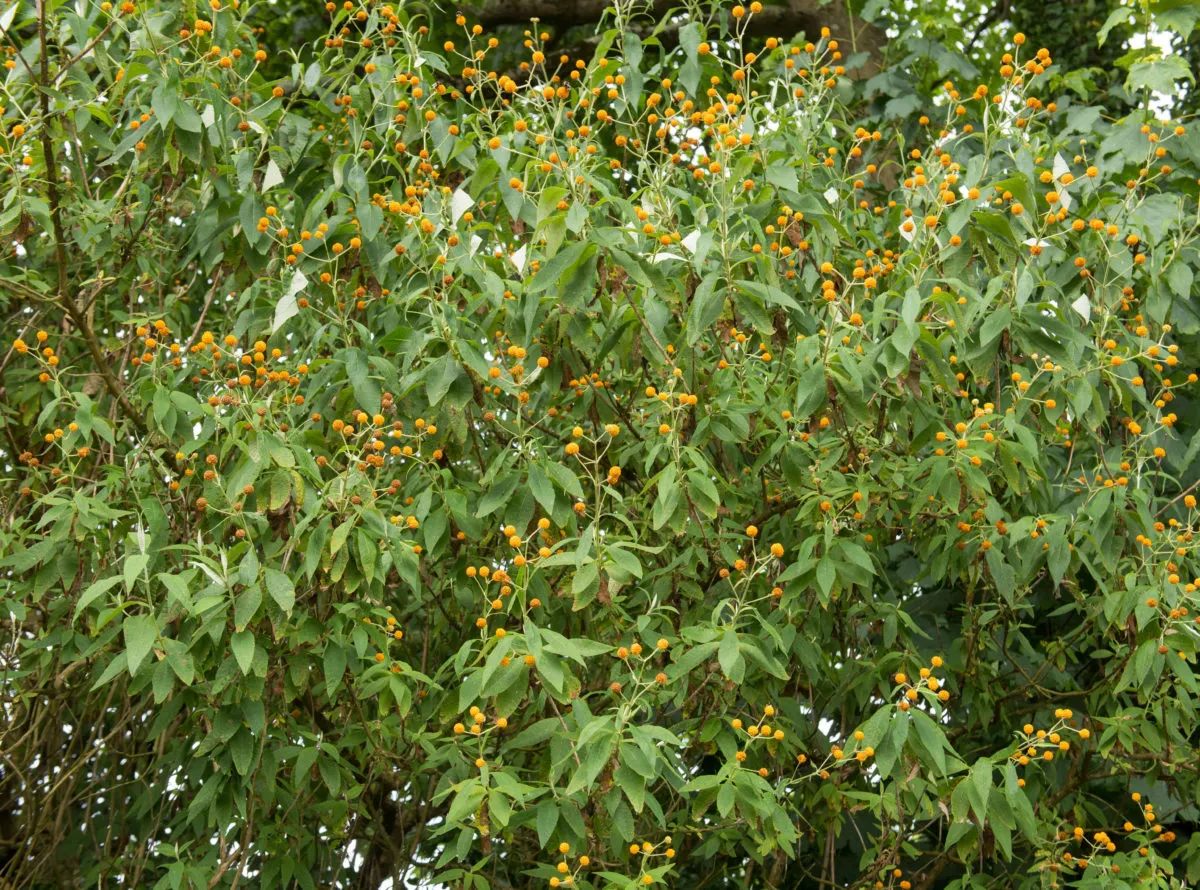
The orange-ball tree (mostly grown as a shrub, really) is a long bloomer. Its canopy will be bedecked with bright orange globes all the way until June or July. Again, that depends a lot on your gardening zone.
You’re safe to start pruning it once the flowers have shriveled up and turned brown. Until then, relax and enjoy its glorious display.
3. Fountain butterfly bush or Weeping butterfly bush (Buddleja alternifolia)
Let’s keep it in the family – or rather in the genus – a bit longer, shall we? Here’s another buddleia that flowers on old wood.
The trick with Buddleja alternifolia is that some cultivars can resemble the butterfly bush a bit too much, especially in terms of color. But you’ll easily be able to tell the difference if you look at the leaves. As the name suggests, the leaves grow in an alternate pattern, rather than an opposite one. And the same pattern extends to the blooms too.
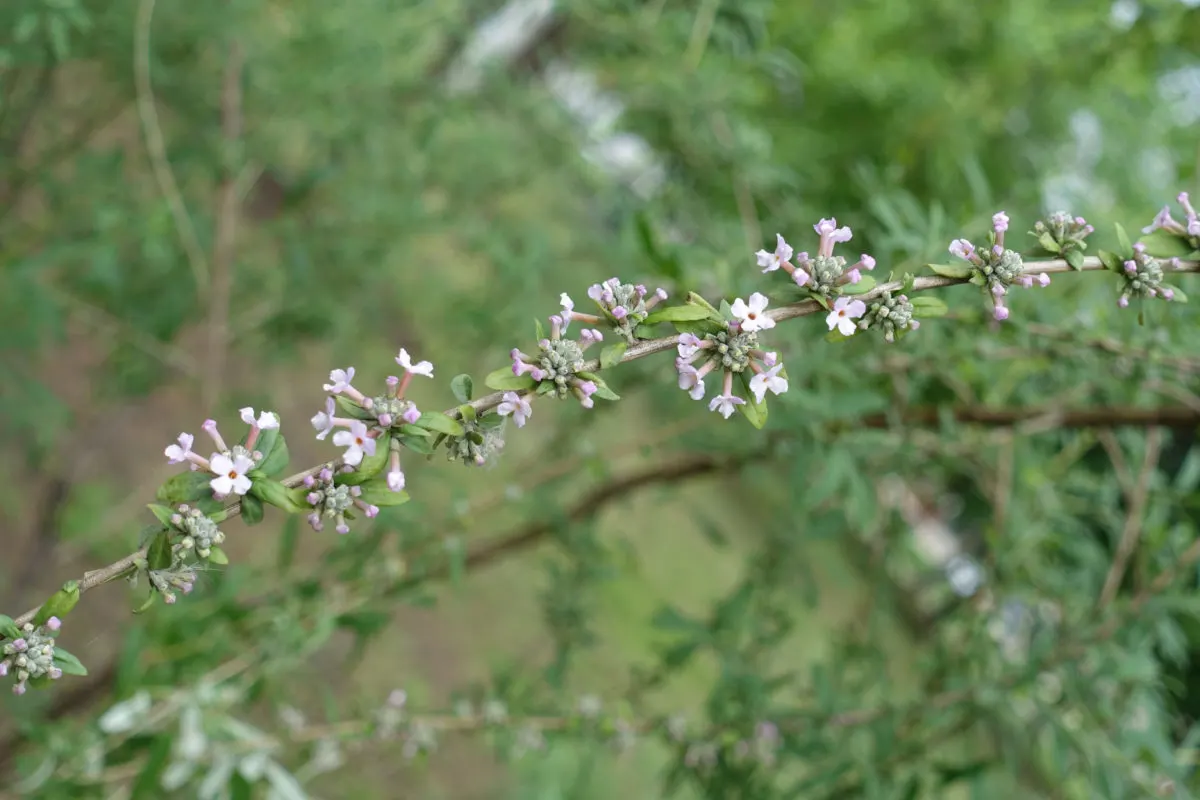
This is a great shrub to grow as an alternative to Buddleja davidii. It prefers full sun and can tolerate dry soil or clay soil equally. Its cascading shape makes it look like a burst of colorful fireworks when it’s in bloom. However, if you prune Buddleja alternifolia in the spring, you’ll lose most of that weeping willow look for the season.
That’s because the fountain butterfly bush blooms on previous year’s stems. You can prune it once the flowers are spent – late May or early June.
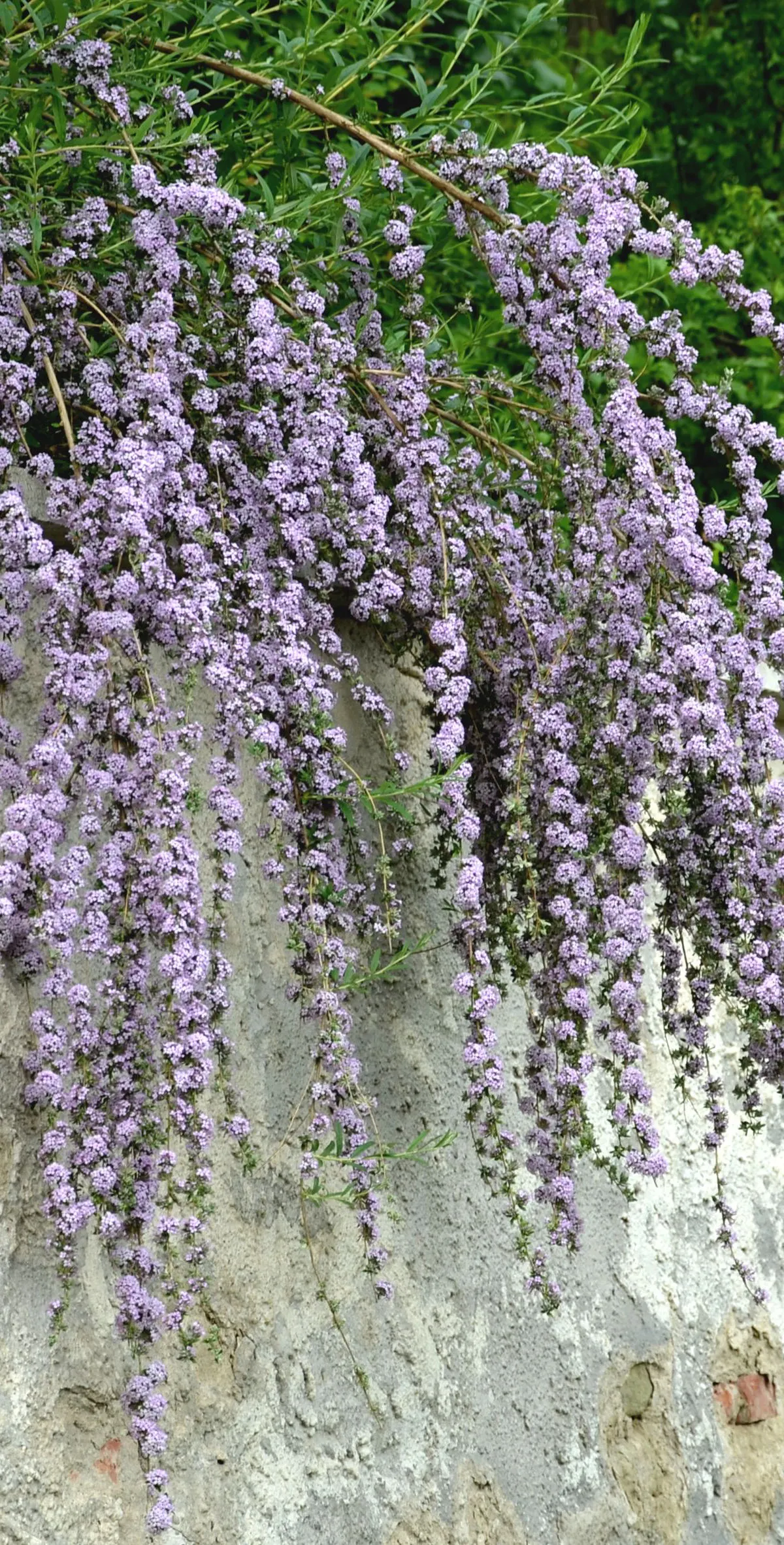
But keep the pruning light and only take off about a quarter or a third of the oldest stems. This type of buddleia is not a particularly fast grower, so it’s best to limit pruning to just minor reshaping of the shrub.
4. Cornel or Cornelian cherry dogwood (Cornus mas)
Since we’re in plant disambiguation mode, here’s another one that I feel the need to address.
In my article on what plants we should prune in winter, I mentioned one particular type of dogwood that could do with a winter prune. That’s Cornus alba, also known as the Siberian dogwood. Cornus alba is a very popular winter garden plant due to its bright stems that come in shades of red, orange and yellow.
On the other hand, we generally grow Cornus mas (aka the cornelian dogwood) for its spring flowers and summer berries.
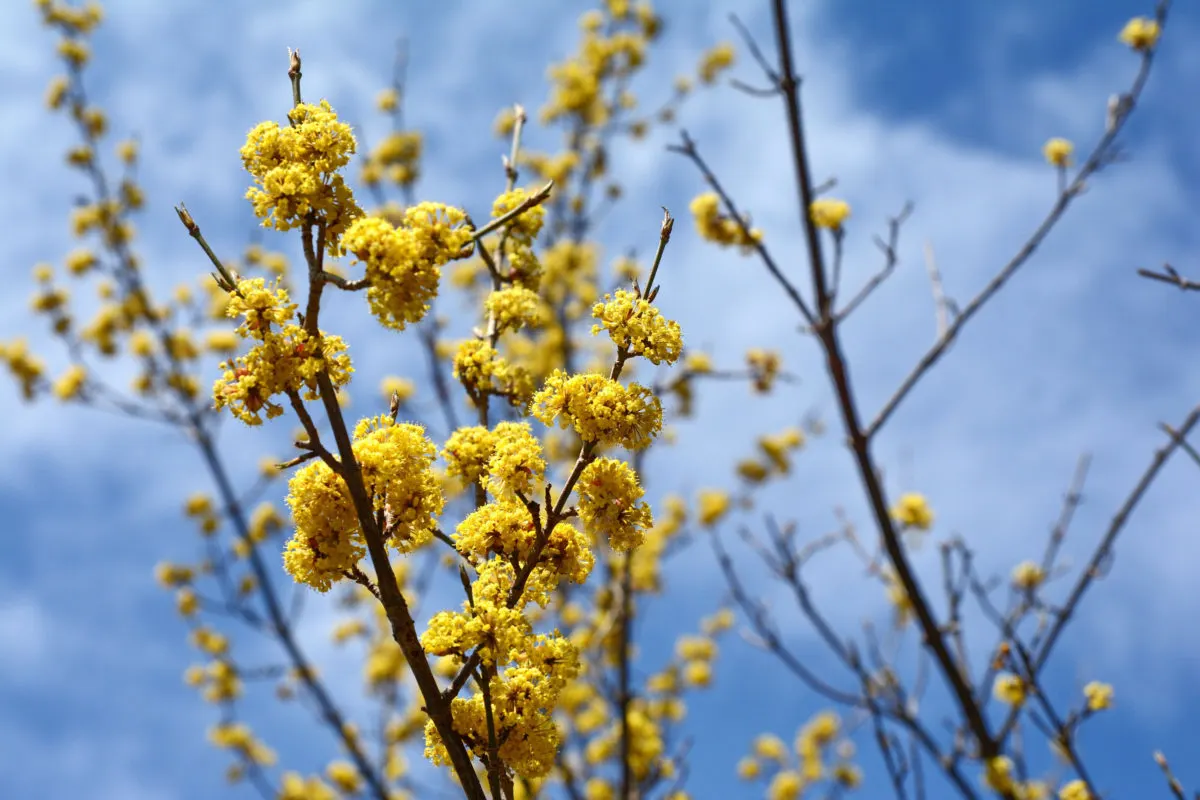
Once ripened, the berries look very much like unroasted coffee berries. But even though this shrub is also known as Cornelian cherry, its berries don’t resemble cherries in taste. They are edible, but quite sour, more similar to rose hips or cranberries in taste than to any other type of stone fruit. I recommend you have a look at this Herbaria from the University of Oxford if you’re curious about how the berries are used as food in certain cultures.
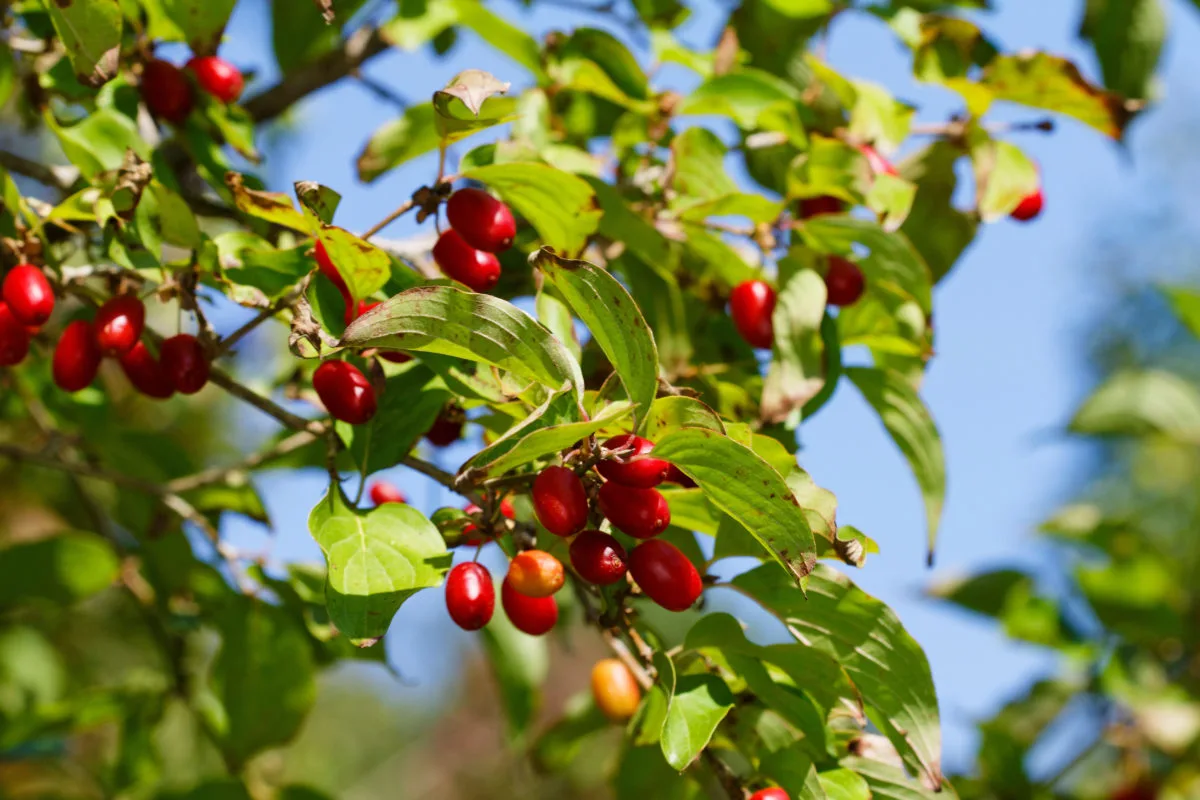
In North America, Cornus mas is more popular as a landscaping shrub rather than as a food source. And for good reason too. It blooms very early in the year. In some areas, it even blooms before forsythia does. The cornelian dogwood makes a beautiful addition to any early spring garden. And its yellow clusters of flowers are an important early source of food for starving pollinators.
You can prune Cornus mas once the flowers are gone. But since the shrub is a slow grower, you shouldn’t prune it hard. Keep your pruning light and remove only a few large branches to reshape the plant. You should stagger a more radical cosmetic prune over a couple of years, especially for smaller shrubs.
5. Flowering quince (Chaenomeles japonica)
Continuing with the theme of edibles disguised as ornamentals, let’s talk about the flowering quince. You may remember it from my article on plants you can propagate from hardwood cuttings in the fall.
Despite its name, flowering quince is closer to the rose family than to that of edible quince. But it got its moniker for a reason – the fruit is edible and you can harvest it in the fall, around the same time as you pick quinces.
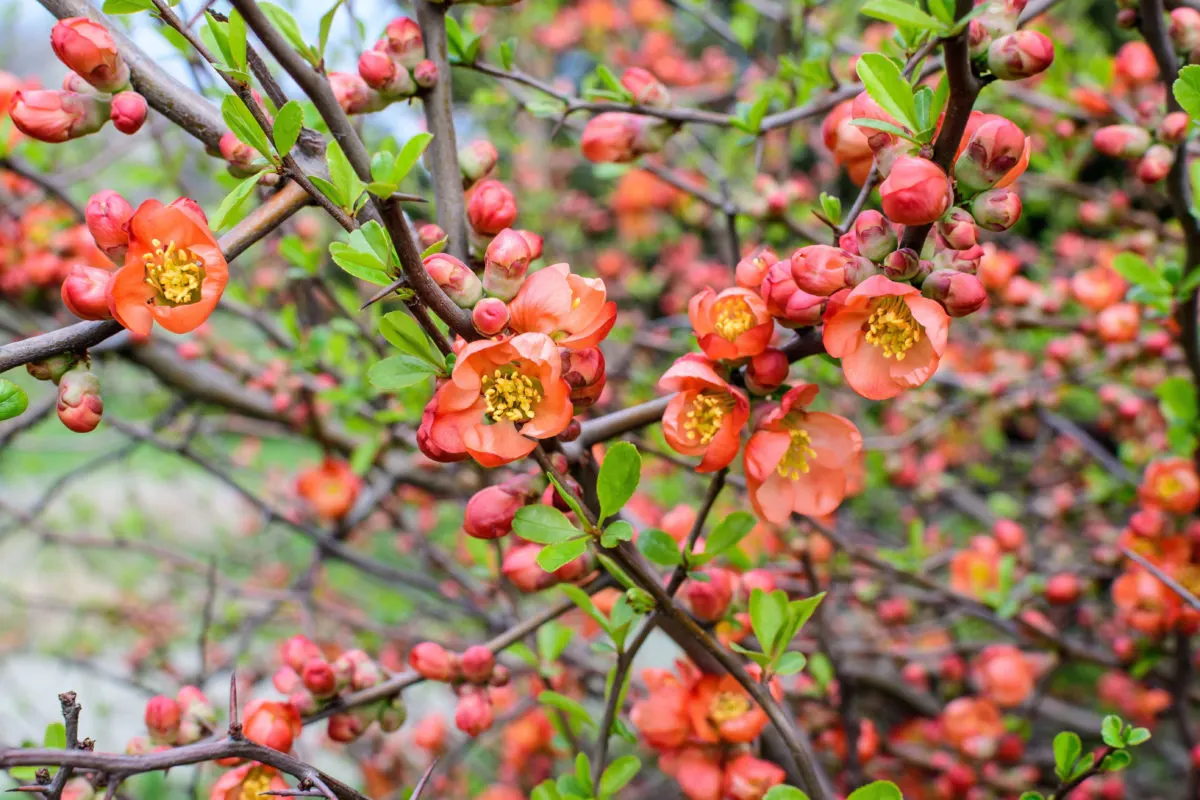
Unfortunately, the name does nothing to encourage gardeners in North America and Western Europe to pick the fruit. I think most gardeners see this shrub merely as an ornamental. Its buds open up very early in the spring – sometimes as early as late winter, if you’ve had a mild one. The pink or orange flowers are a real treat this early in the season.
But flowers are not this shrub’s main attraction in its countries of origin. In eastern Asia, the fruit is also considered an autumnal delicacy that can be processed in jams, jellies, glazes and marmalades. The high pectin content of the fruit makes for very creamy sweet spreads. But only if you can refrain from pruning this shrub in spring.
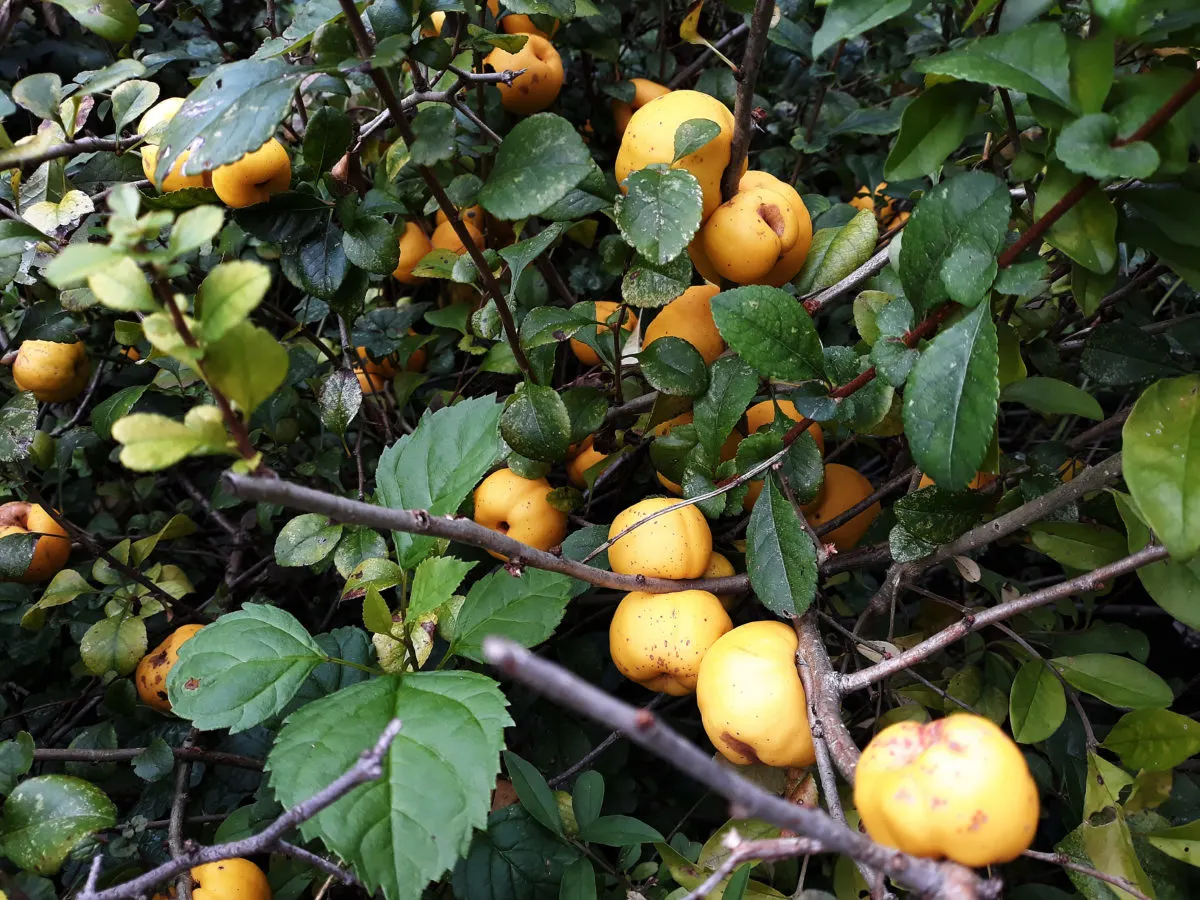
So by not pruning this plant in spring, you not only get beautiful flowers very early in the year, but you also get delicious fruit that you can preserve and enjoy over the winter. When can you prune it? If you must, you can prune it lightly once you’ve picked the fruit – usually in September or October, depending on your gardening zone.
Just in case you’re tempted to ignore the fruit, here’s a delicious recipe for Japanese quince jelly with star anise from Grown to Cook. But if you have a favorite way of processing larger quince, you can use the same recipe for Japanese quince, since the two are very similar in taste and texture.
6. Evergreen barberry (Berberis)
Talking about barberry, in general, feels a bit like cheating. There are so many types of barberry, ranging from deciduous to evergreen and from large ornamentals (16 feet; 5 meters) to compact cute little shrubs (1 foot, 30 cm).
The reasons to grow barberries are just as numerous. Some gardeners grow them for late-winter flowers, others for their very colorful berries. And if you want to create a thick privacy hedge, the spikey leaves of some barberry cultivars will definitely keep nosy passersby from peeking in.
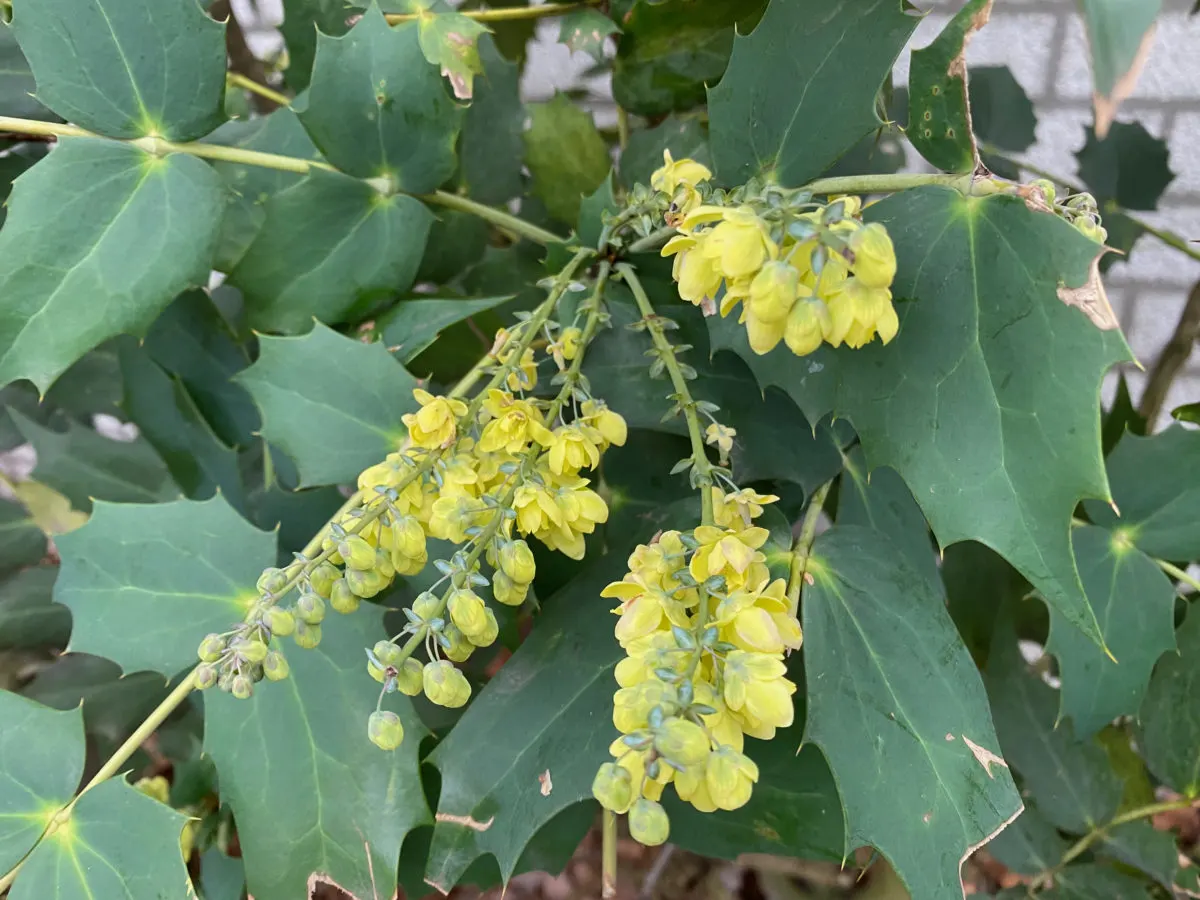
When it comes to pruning, the timing depends on what kind of shrub you’re growing. If you’re growing evergreen Berberis, you should not prune them in spring. The clusters of neon yellow flowers (almost resembling those of wisteria) open up in early spring. They’ll slowly turn into decorative berries over the summer.
You can prune barberries after the flowers are spent, usually in mid-summer if you choose to sacrifice the berries. Or you can wait until fall before you prune in order to enjoy all the stages of these decorative shrubs. Keep the pruning light and surface level; and only cut back some of the stems that have fruited.
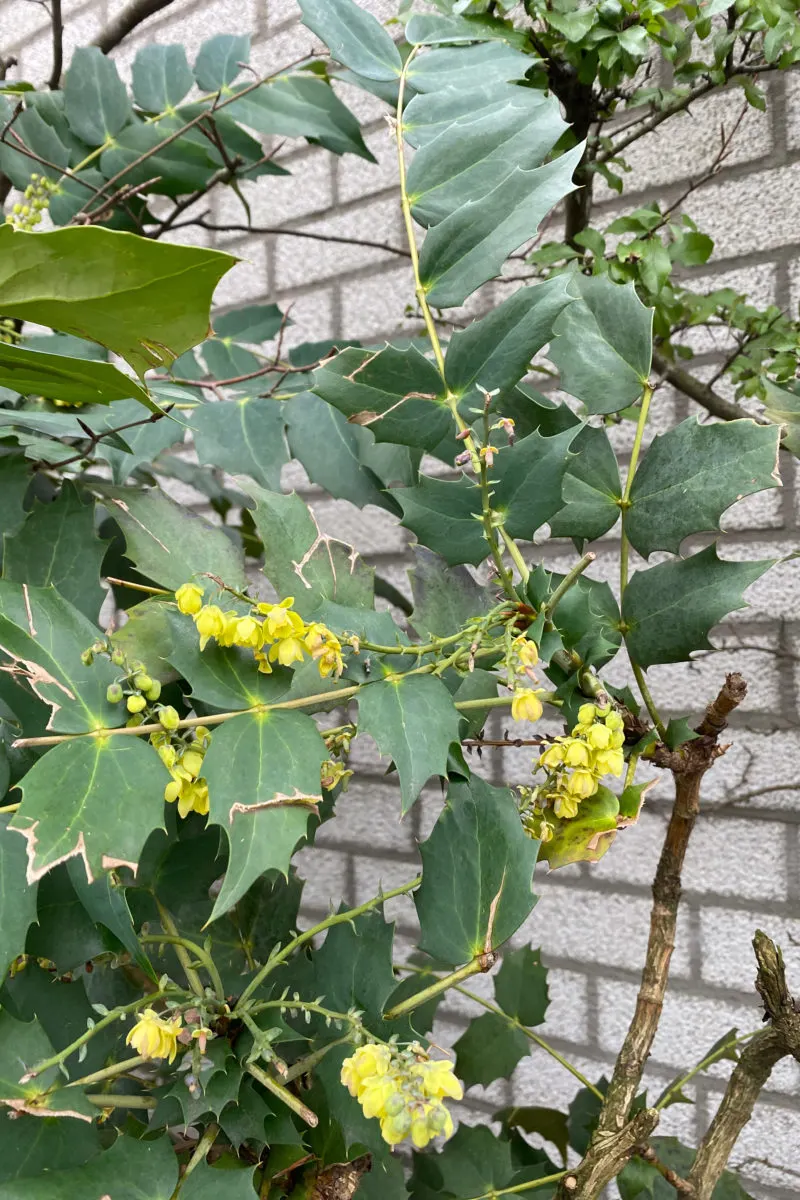
Some Berberis grow faster than others, so you can prune them to control their size and shape. Always take extra safety precautions, such as wearing thick gardening gloves, long sleeves and safety goggles, when you’re pruning barberry. They have very spiky leaves and branches and the thorns can cause skin irritation. Dress as you would if you were pruning large rose shrubs.
7. Magnolia shrubs
I’ve decided to include magnolia shrubs on the list of plants that we shouldn’t prune in spring. (Or at least not until May, anyway.) I know that most gardeners wouldn’t dream of hacking away at their magnolia trees right when they’re about to put on the most stunning display of blooms.
But for some reason, magnolia shrubs don’t often get the same nurturing treatment. Maybe it’s because we see them as shrubs and have been conditioned to think that all shrubs need a good spring prune.
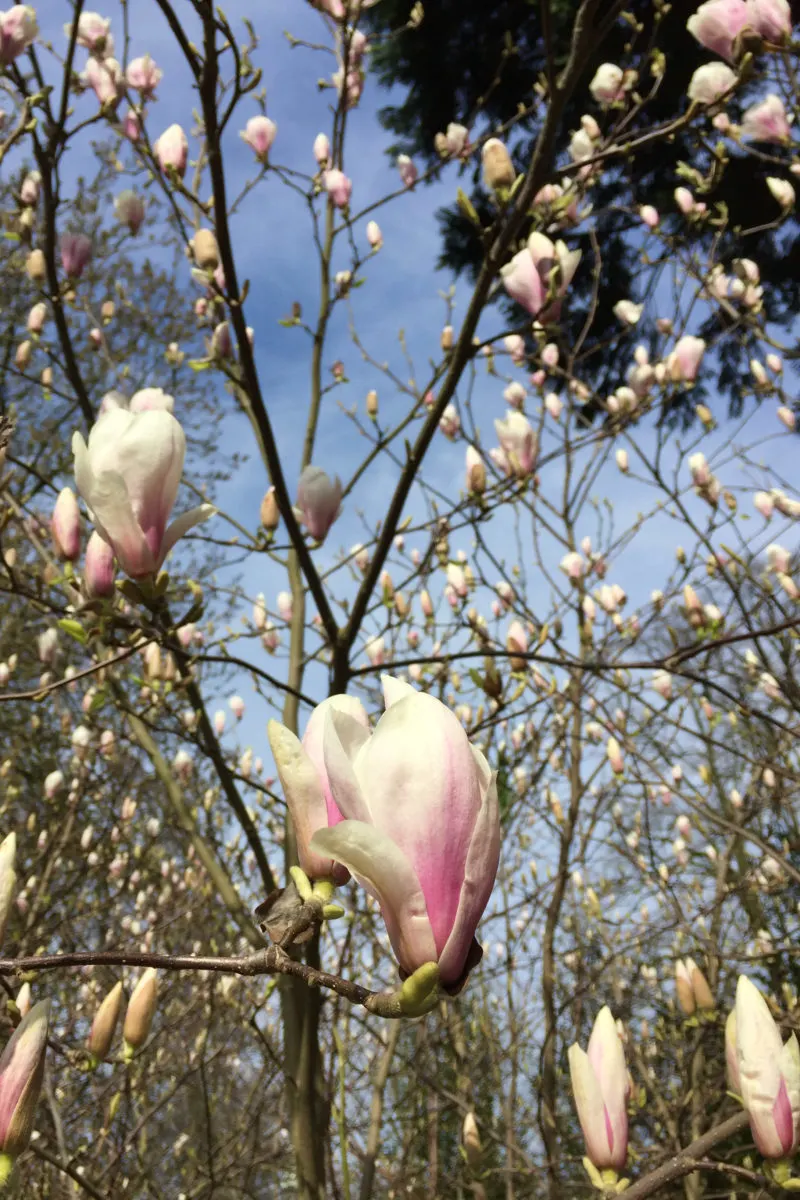
First of all, a lot of magnolia shrubs have been bred to stay compact. They are relatively slow growers, so they don’t need constant yearly pruning, by default. Secondly, magnolia buds are just opening up in late February and March – depending on your gardening climate and what cultivar you’re growing. So spring is definitely not the right time to hack away at them.
A third consideration is that pruning your magnolia in the spring will encourage basal shoots to pop up. This kind of growth, also known as sucker growth, unnecessarily crowds the plant from within. An overcrowded plant reduces airflow and may lead to a fungal problem later in the growing season.
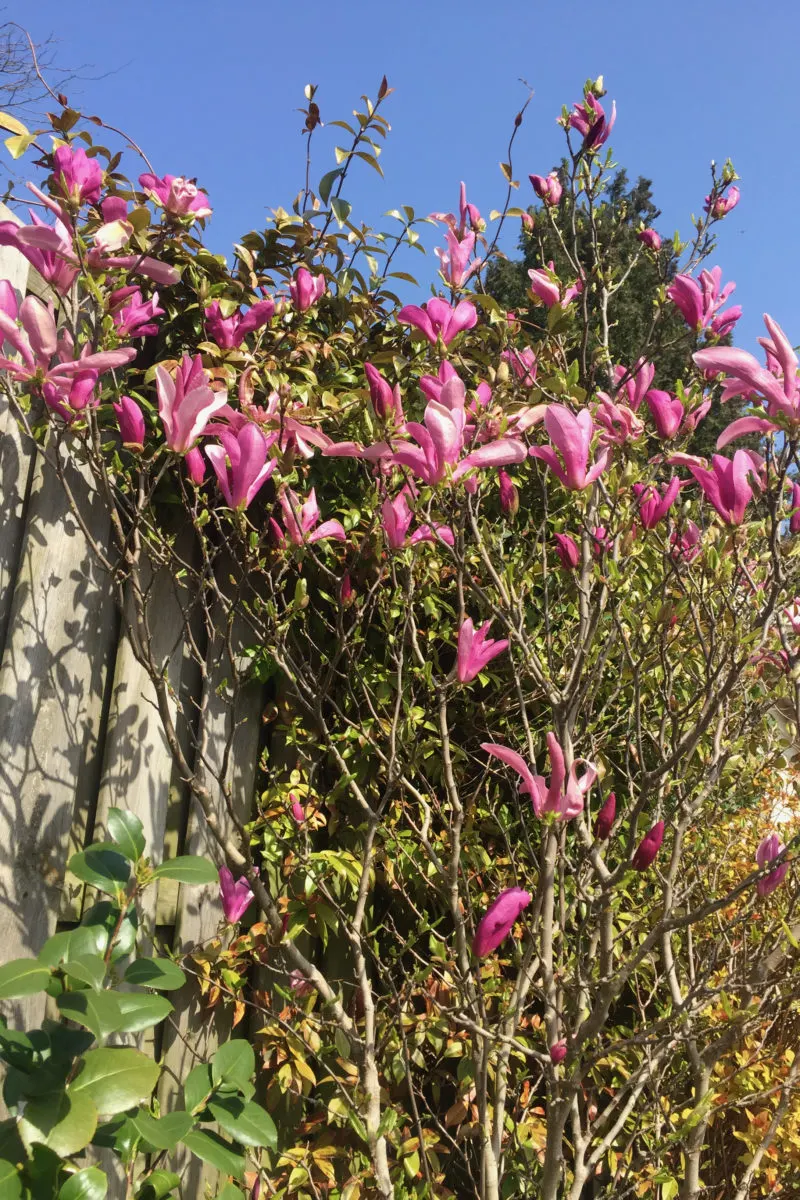
If you really want to reshape your magnolia shrub, it’s better to cut back the extra branches once they have leafed through in mid-summer. Again, it’s important to get the timing right, and aim for the time between the loss of this year’s flowers and the emergence of next year’s buds. Keep your pruning light and thoughtful. You don’t want to overly stress the shrub right before its prime growing season.
8. Mexican orange blossom (Choisya)
Despite being a small genus, Choisya is a popular choice as an evergreen ornamental shrub for gardens in areas that get mild winters. The scent of the early spring flowers resembles that of orange flowers (hence its nickname, Mexican orange blossom). And for gardeners in the South of the United States, choosing this native plant is a sustainable way of gardening.
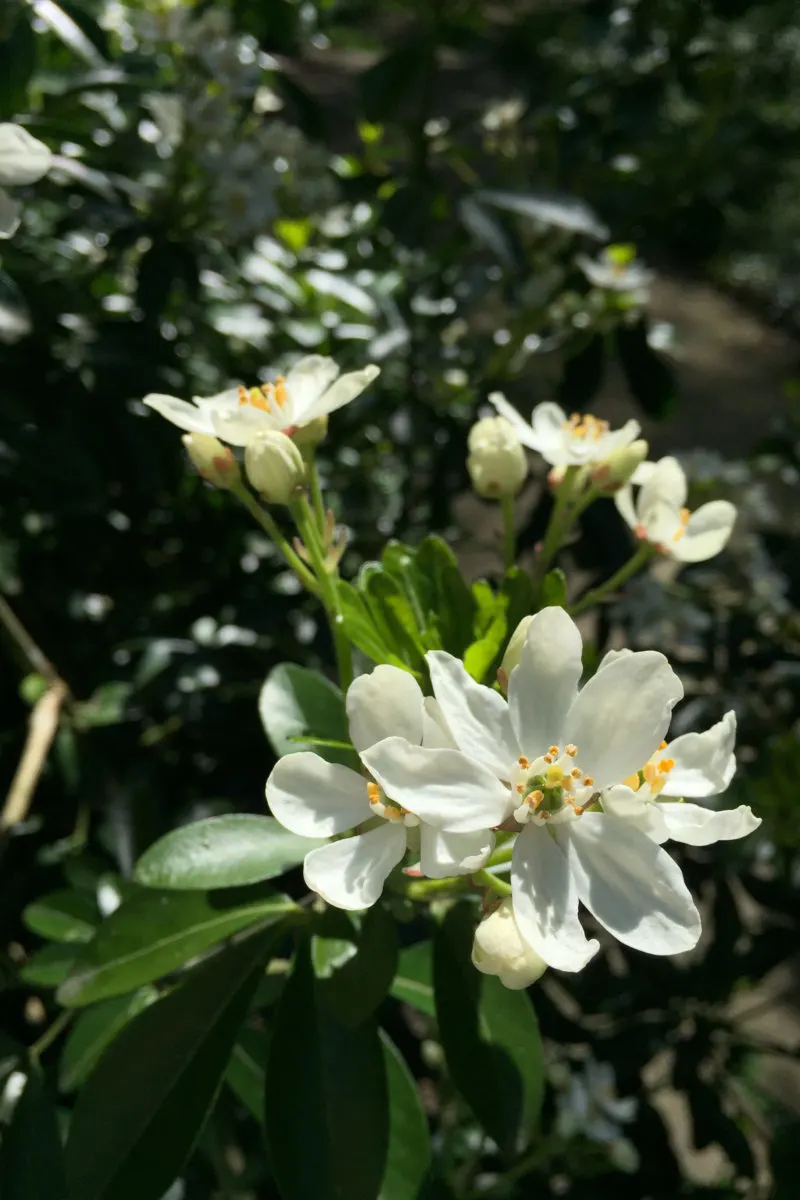
Choisya need a bit of time to get established, especially in areas that get lower temperatures. But once established, this early blooming evergreen won’t need too much pruning. If your plant is getting too lanky or too large, wait until the flowering period has finished before you cut it back.
You can deadhead the spent flowers, as they die back, and trim back to a healthy leaf bud to keep the shrub looking tidy.
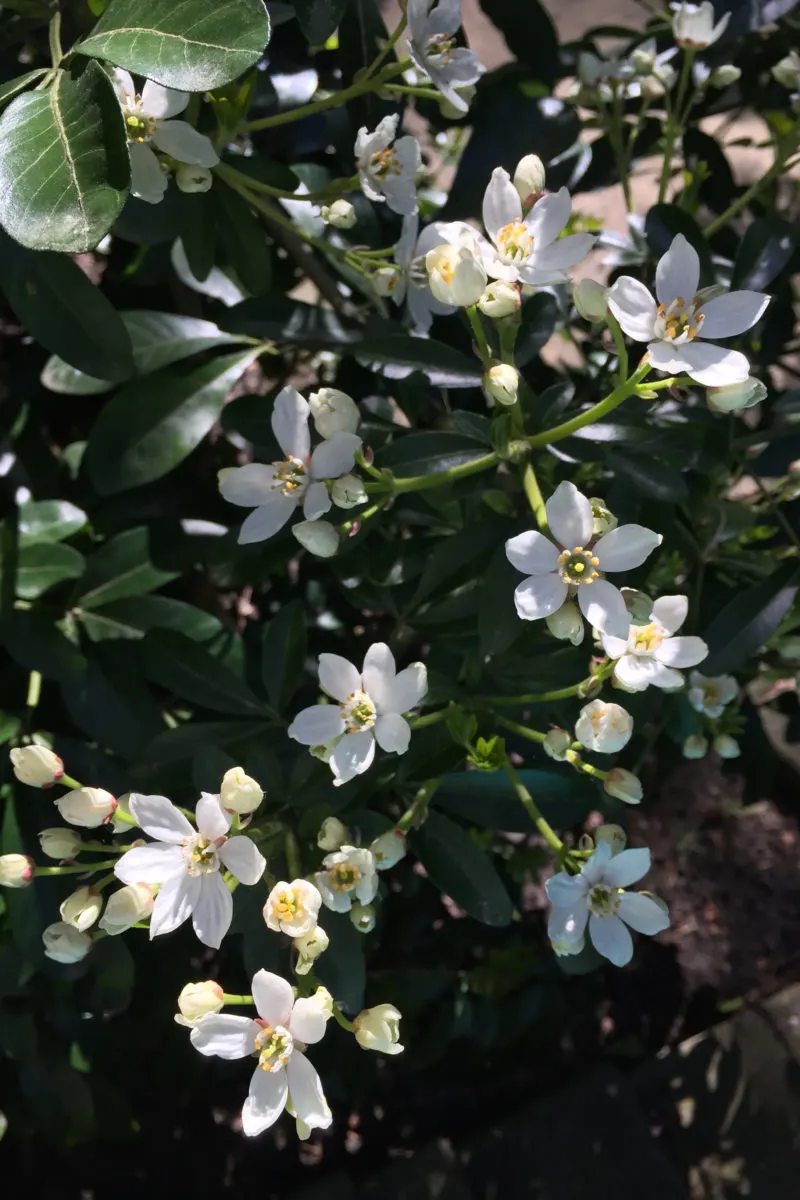
Once every three to five years, you may need to do a more drastic prune, depending on how fast your plant has been growing. Take about a third off the top to encourage a more even growth pattern.
9. Camellia (Camellia japonica)
Keeping to the theme of ornamental evergreens that flower in the spring, the most spectacular one, in my opinion, is Camellia japonica. I may be biased, since my own camellias bring me a lot of joy in an otherwise very dreary month.
I even wrote an entire article on how to get an abundance of camellia blooms for Blooming Backyard.
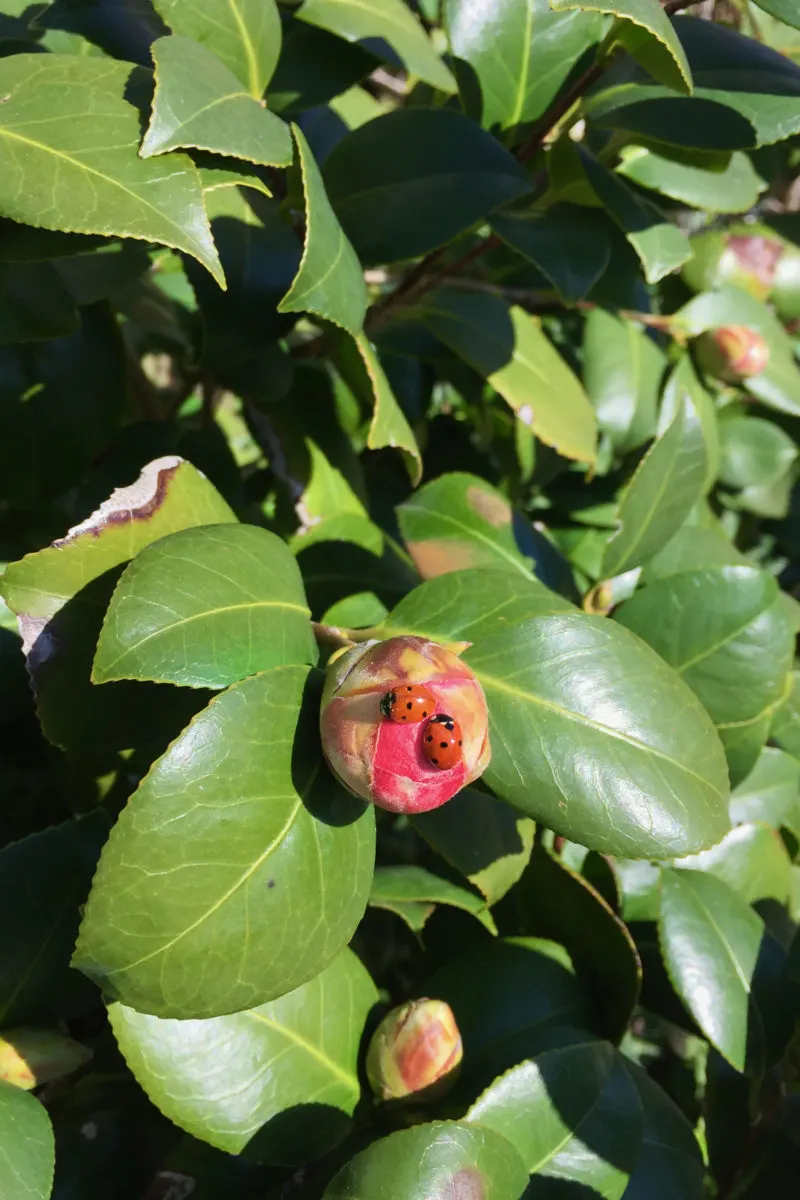
In the spring, your camellia will already be in bloom. So you should wait to prune your camellia until the flowers are gone, but next year’s flowers haven’t formed. In my area, that happens in June.
Camellia forms the following year’s buds in late summer or early fall, so timing your pruning before that is crucial. If you leave pruning too late, you risk cutting off next year’s flowers.
However, first consider if you need to prune camellia at all. It’s a slow-growing shrub that stays mostly compact. If you do decide to give it a bit of a makeover, stick to pruning it just enough off the top to maintain its contour.
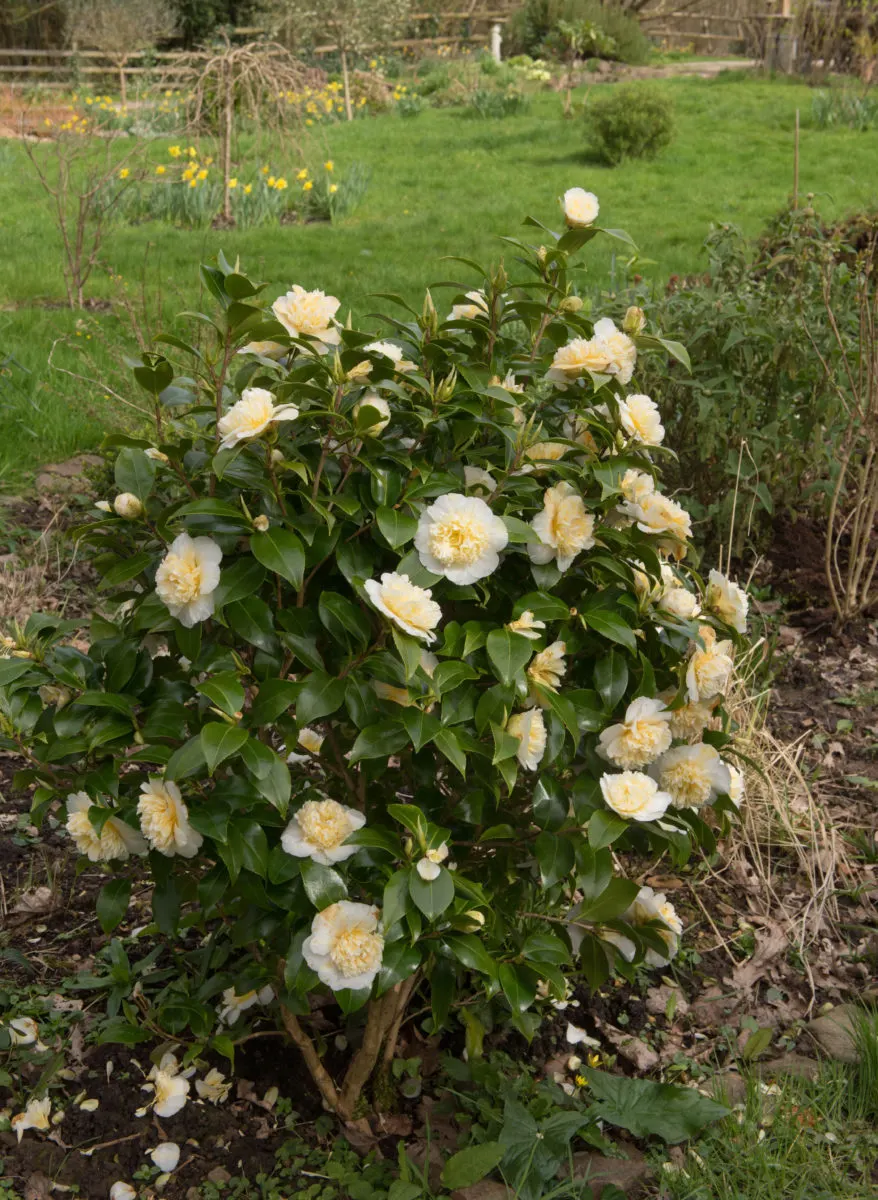
If it’s a tree shape you’re after, do a staggered pruning over several years. Trim back the lower branches to encourage the plant to reach taller every year. But if that’s your goal, make sure you’re starting with a larger cultivar, not with a dwarf camellia.
10. Rhododendron
Last summer, I wrote an article about eight reasons why rhododendrons don’t bloom. I didn’t expect that post to be as popular as it turned out to be. But I think I was more surprised to find out that one of the common reasons these shrubs aren’t blooming is because people are pruning their rhodys in the spring and taking off the current year’s blooms.
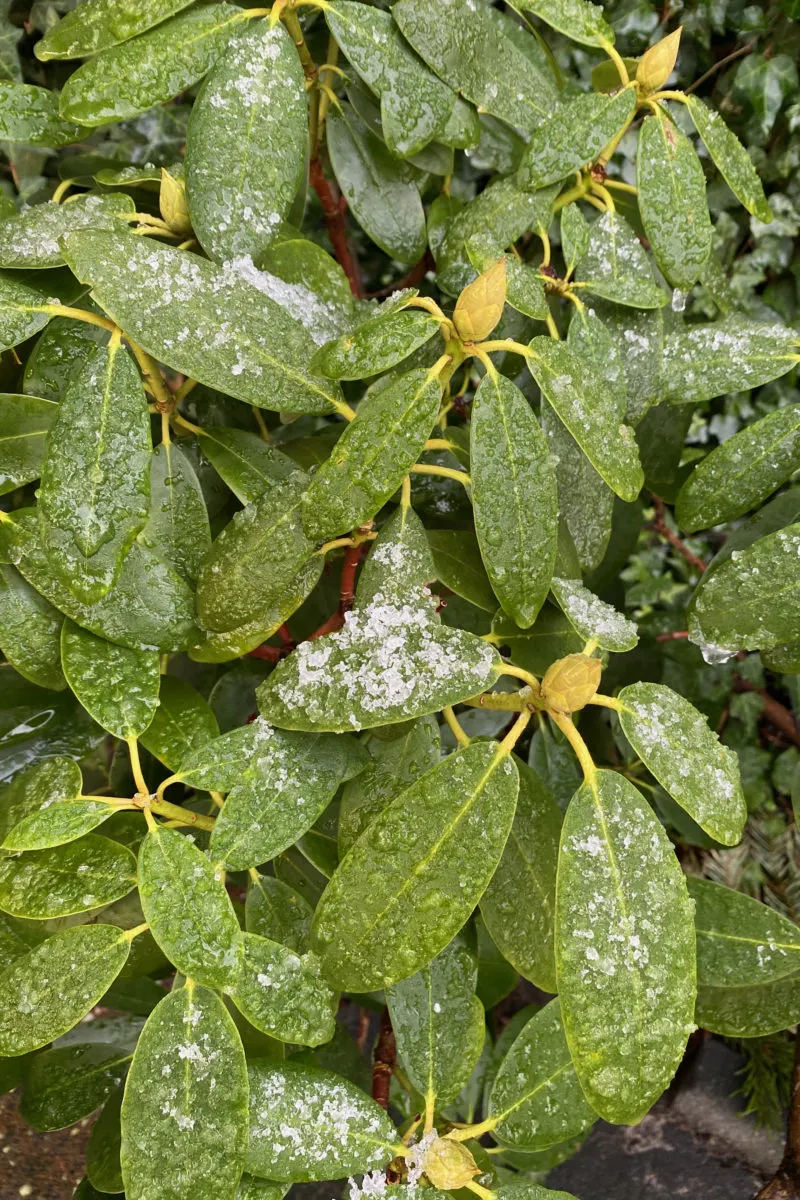
Just like camellias, rhododendrons flower on old wood. Unlike camellias, they flower a bit later into the spring. Most of my rhododendrons will still be in bloom in late May and early June. So pruning them in spring is a big no-no.
Rhodys, in general, don’t need too much pruning. They’re slow and steady growers that won’t spread too much. However, if you want to reshape your rhododendron shrub, waiting until mid-summer, when all the blooms are gone, is the way to go. And even then, don’t cut off too much at the same time, especially from younger plants.
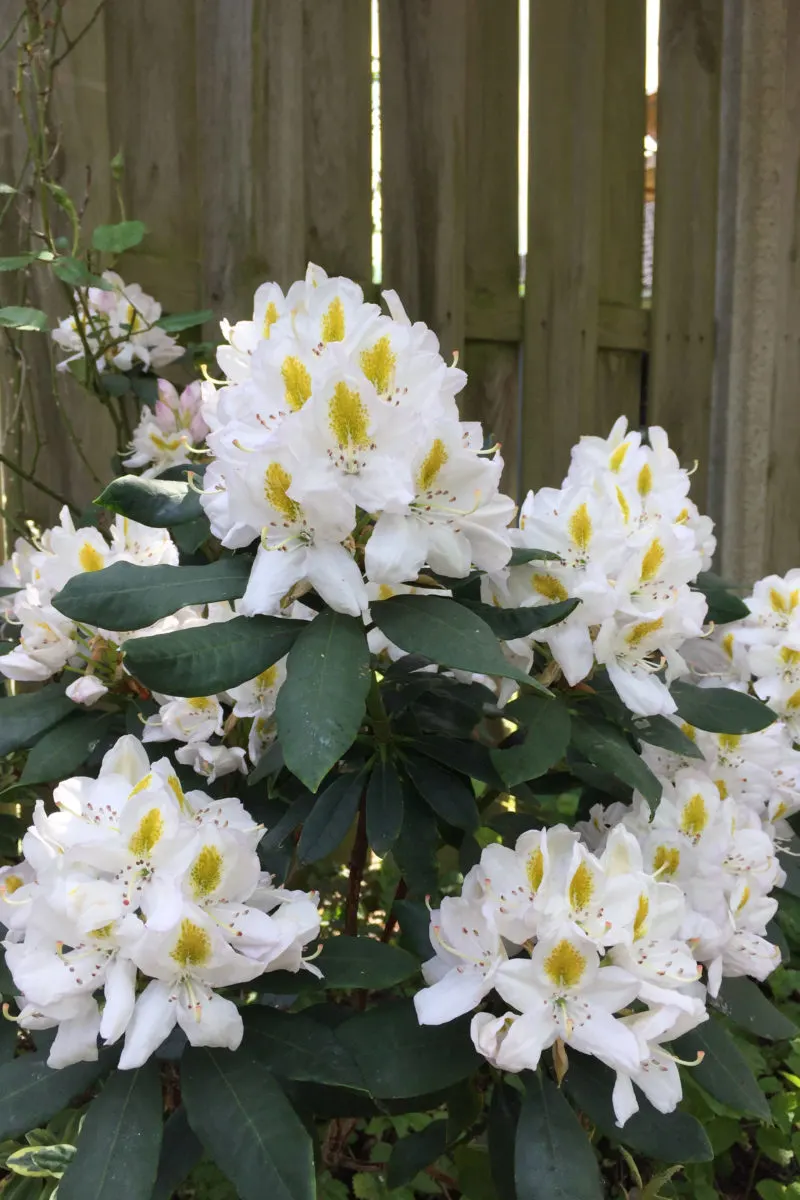
You can remove dead or diseased branches at any time, but an over-pruned rhododendron will take a year or more to recover.
11. Deutzia
Deutzias are dainty little ladies in the Hydrangeaceae family. And just like most hydrangeas, they also flower on last year’s stems.
Deutzias are deciduous, so the temptation to start pruning them in early spring (when the branches are bare) runs high. But keep in mind that this will lead to a loss of this year’s flowers. Even in a best-case-scenario, when you’re doing light pruning, you’ll be diminishing this year’s blooms.
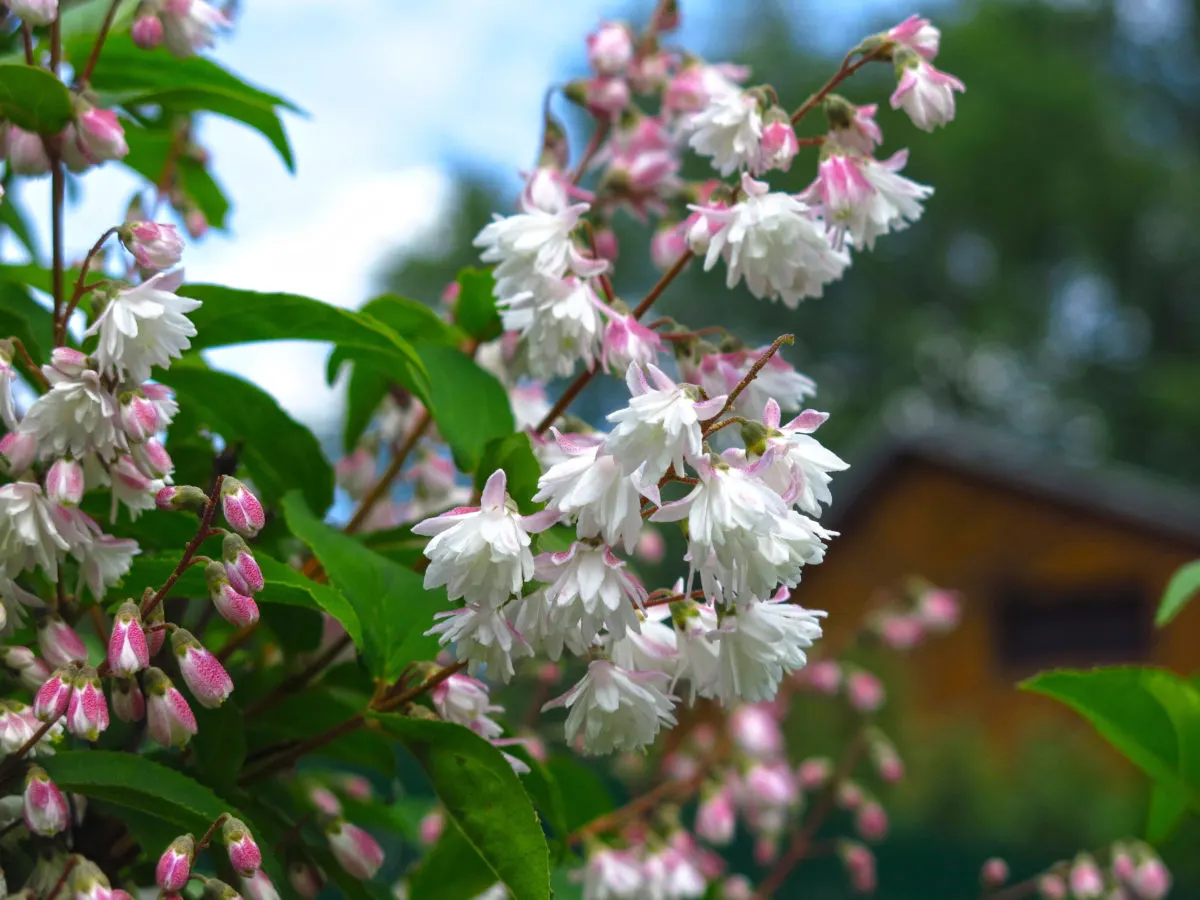
Hold on tight until April or May, when the flowers are in full bloom, and you’ll see what I’m talking about. The delightful blooms in shades of pink, peach, white and even lilac will be all the reward you need for not jumping the gun on pruning.
The best time to prune deutzia is after it’s done flowering. In temperate climates, such as the one I garden in, the best time would be in mid-June or the first week of July. However, if I know that July will get hot and droughty, I prune this shrub in June. Over the years, I’ve learned that pruning when the plant is trying to retain moisture is not the best timing.
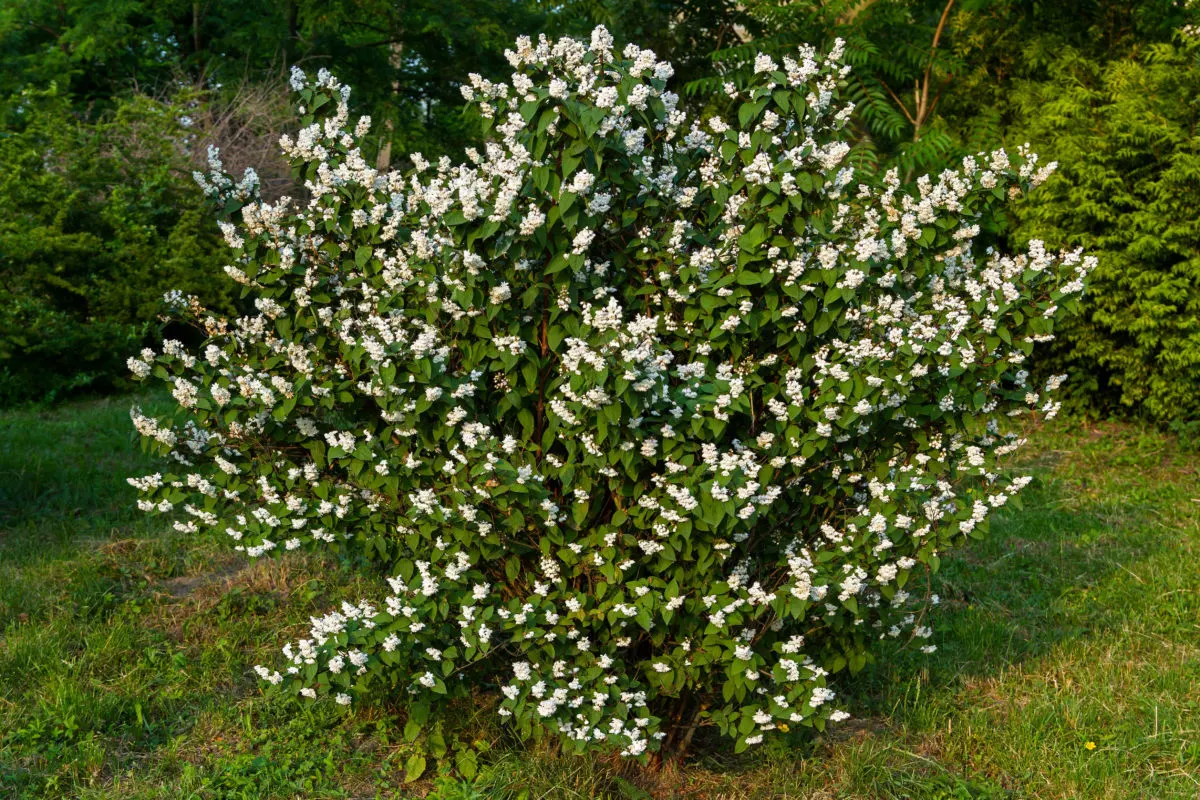
There are over 60 species of deutzia according to the North Carolina State University Extension. So depending on what kind of deutzia you have, you’ll be dealing with a medium- or fast-grower. (With a notable exception being the dwarf cultivars that were bred for container growing.) Some deutzia get more unruly than others, so they’ll need a bit of a harder prune once the blooming period is over.
You can cut the side branches back by about a third, right above a leaf node. If your deutzia hasn’t been pruned for a few years, you might need to do a harder rejuvenation pruning. Branches will display diminished flowering the older they get, so you can cut back about a quarter of them down to the ground starting from the inside of the shrub. This should open up the space and the energy for younger branches to shoot up. Stagger your rejuvenation pruning over a couple of years.
12. Early-flowering clematis (Group 1 clematis)
Clematis give gardeners, especially newbie ones, a bit of a headache. But I think the trickiest part is learning which one you have – and this may take a couple of growing seasons.
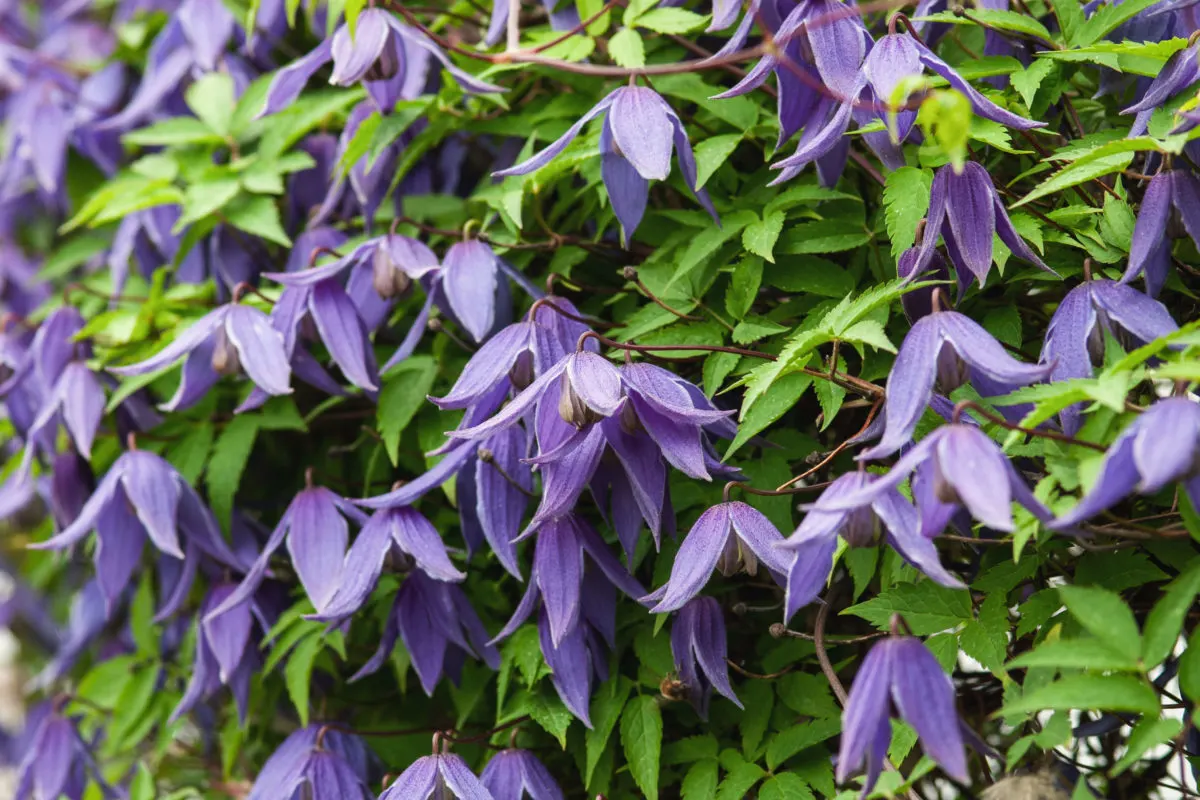
If your clematis is blooming in late winter or spring (on previous year’s stems), then you’re growing a Group 1 clematis. Another indication of the group, though by no means a guarantee, is how closely related the clematis is to its “ancestors.” Wilder clematis that haven’t been hybridized for large and showy flowers also tend to fall in this category. For example, Clematis montana, C. alpina, C. cirrhosa, C. armandii and C. macropetala all flower early in the year.
The good news is that this group rarely needs hard pruning anyway. The bad news is that, in the months leading to the bloom, the flower buds are very easy to miss. Naturally, pruning them in spring will take this season’s flowers off the table.
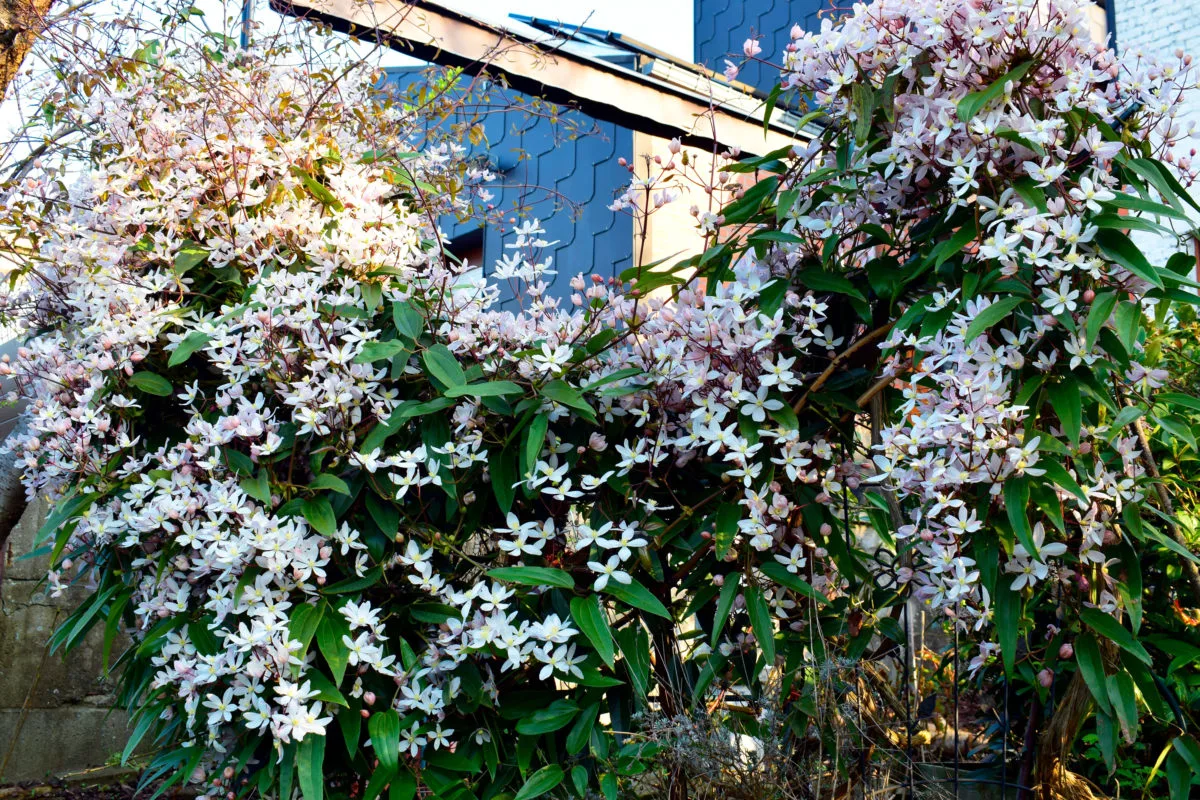
Early-flowering clematis blooms can last up to three months, so you’d better put this job on your calendar for June.
As soon as the flowering is over, cut back about a third of the oldest stems down – close to the base, but right above a node. You can also take a third off the top of the remaining stems. If you skip this step too many years in a row, your clematis will turn into a messy tangle or too many leaves and too few flowers.
13. Early-flowering viburnum
With about 175 species in the genus, it’s a bit tricky to give general viburnum pruning advice. Viburnum runs the gamut from winter-flowering to spring- and summer-flowering; and from evergreen to deciduous. Gardeners grow them for flowers, berries or foliage. Suffice it to say, there’s a viburnum for every climate and every gardening scenario you can think of.
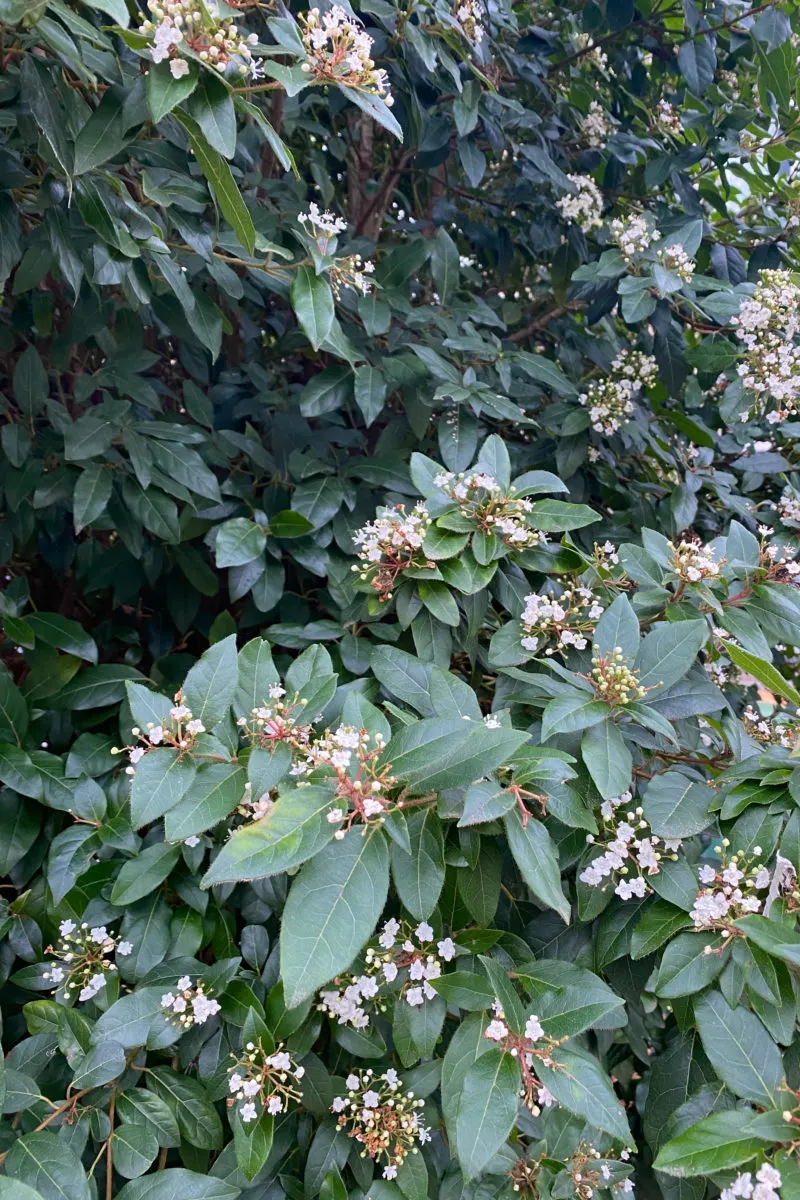
Naturally, timing your viburnum pruning is widely dependent on which one you’re growing. If your viburnum flowers in late winter and early spring, then you shouldn’t prune it this spring.
The evergreen viburnum in these photos (Viburnum tinus) started opening up in mid-January and it’s one of the very few sources of food for the pollinators that are just waking up from the winter slumber. Pruning can wait until late spring and early summer, once the flowers have faded but next year’s bud hasn’t set in.
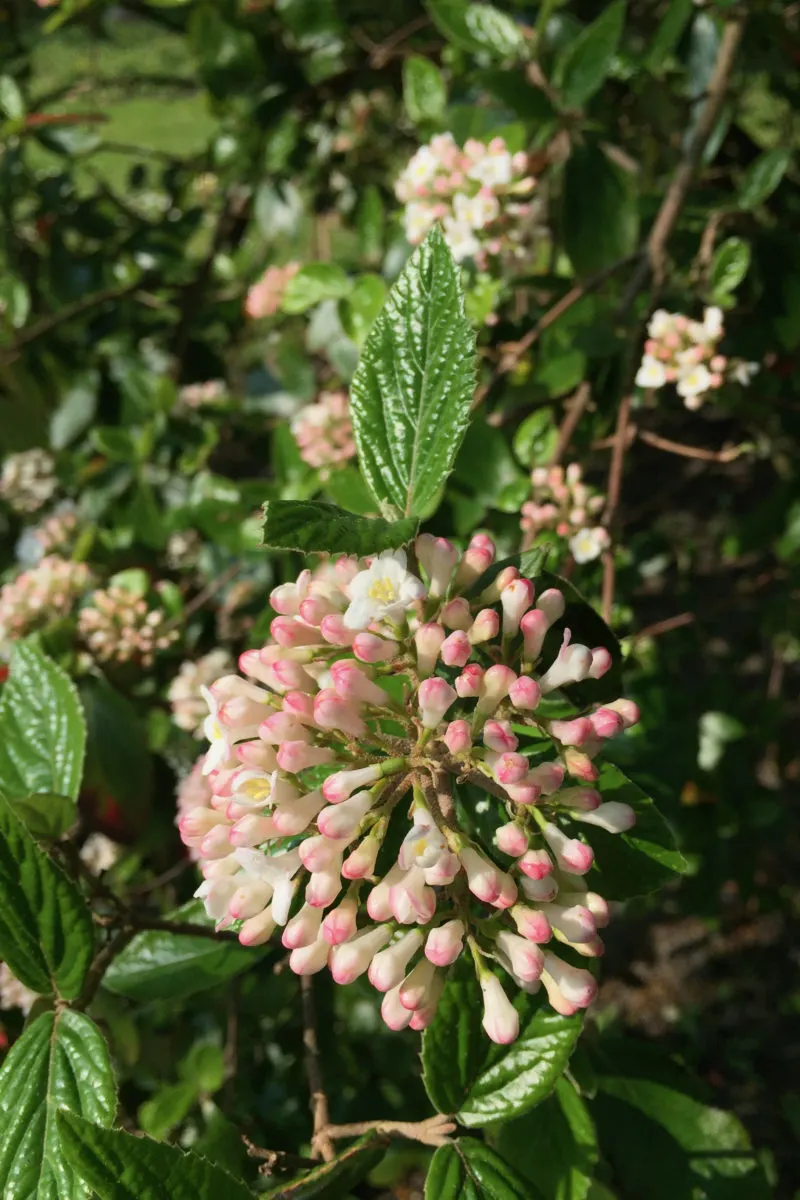
You can prune early-flowering viburnum harder than the deciduous types, but not as a matter of habit. Do a yearly cut-back to maintain its shape, then prune harder every few years if the plant has been growing too straggly.
14. Spring-flowering Spirea (Spirea japonica)
In this article, I taught you how to propagate Spirea from hardwood cuttings. You can still do that in spring, by the way. But that’s pretty much the only reason to cut back your spring-flowering golden flame bush. I say spring-flowering because there are some cultivars of Spirea that flower in the summer; you can still prune these cultivars in spring because they flower on new stems.
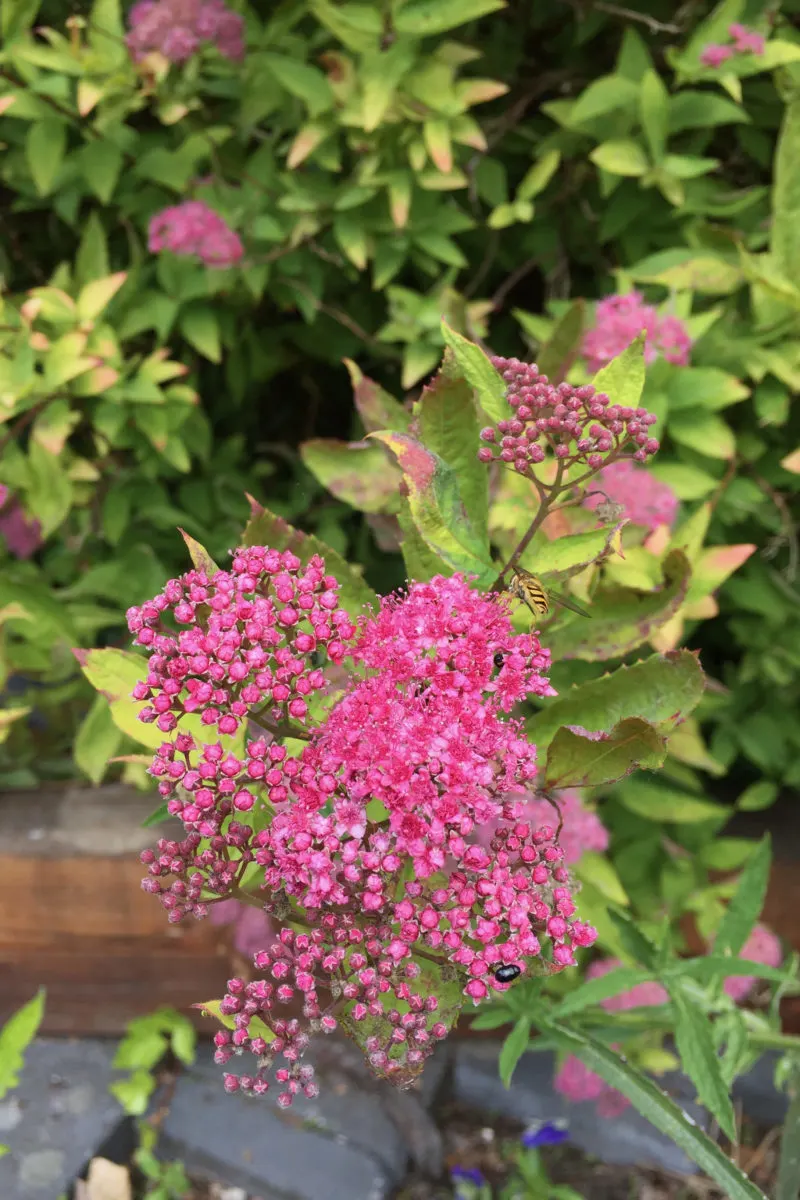
Spirea japonica blooms in mid- to late spring on last year’s growth. So pruning it in spring will only remove this year’s buds.
You can prune this beautiful ornamental shrub once the flowers are gone. In some climates, you’ll have to wait until early July. You can skip pruning one season – I did, just to see what happens – and your Spirea will still flower next year. But the clusters of blooms won’t be as dense or as large.
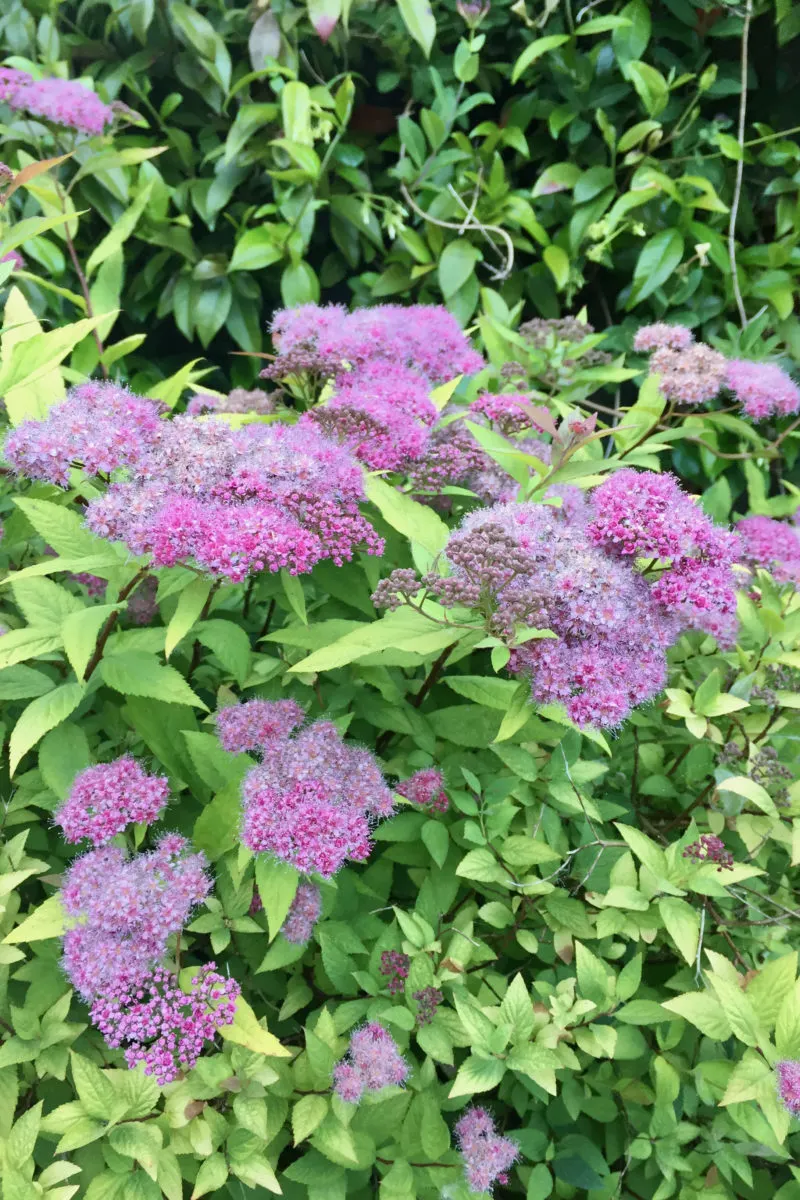
When you’re pruning it after flowering, prune back about a third off the top. Once every few years, you can do a harder prune and cut your Spirea closer to the base. It will take a couple of growing seasons to reach the same size, but the growth will be more compact.
15. Daphne (Daphne odora)
A good portion of the plants on this list are overachievers when it comes to their blooming time. Forsythia, camellia and magnolia are all very early bloomers. But only daphne and choisya can brag about early blooming combined with a simply divine scent.
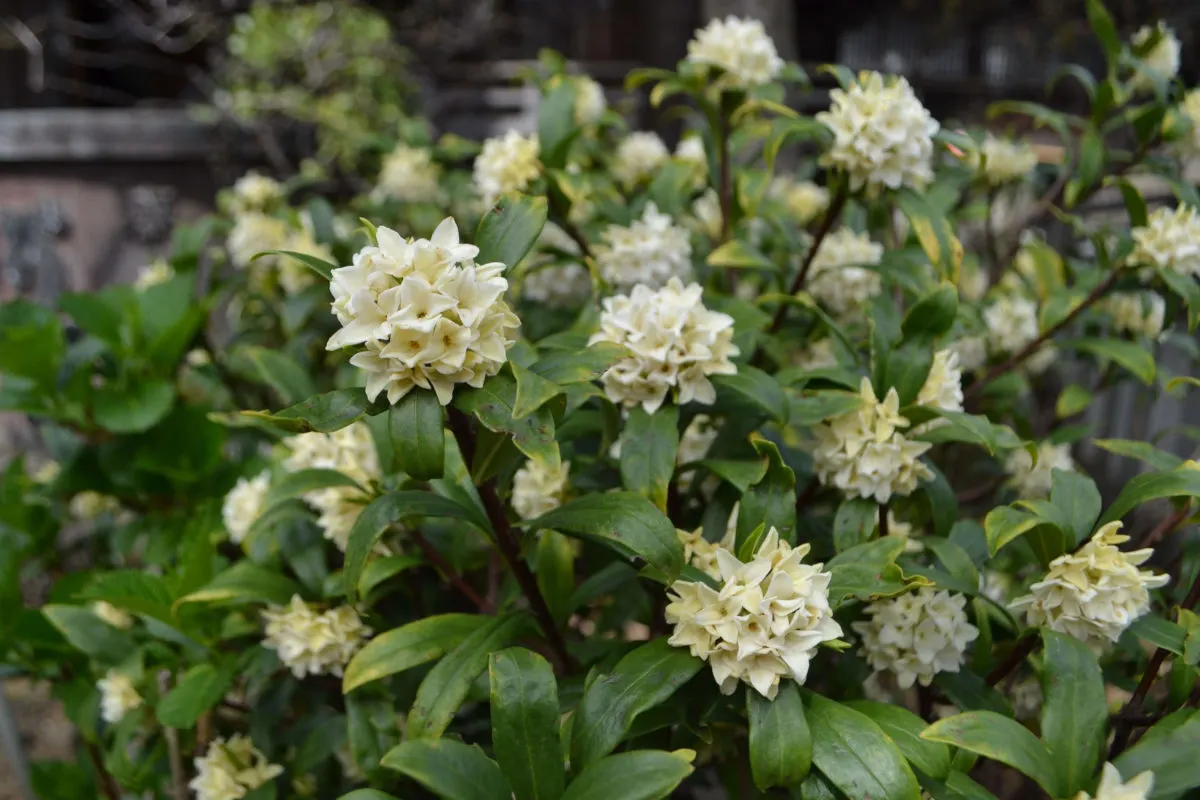
Daphne flowers give off a rich floral fragrance that permeates all over the winter garden. The buds are visible in February, but they fully open in March and April, depending on what cultivar you’re growing. And speaking of cultivars, there’s a daphne for every gardening scenario – whether sun or shade – and most of them are winter hardy.
Daphnes are slow growers, so you won’t need to cut them back too often or too hard. In this respect, they behave more like rhododendrons and camellias. So with all these shrubs, it’s better if you plan twice and plant once, choosing a smaller cultivar if you think you won’t have enough space for when the plant matures.
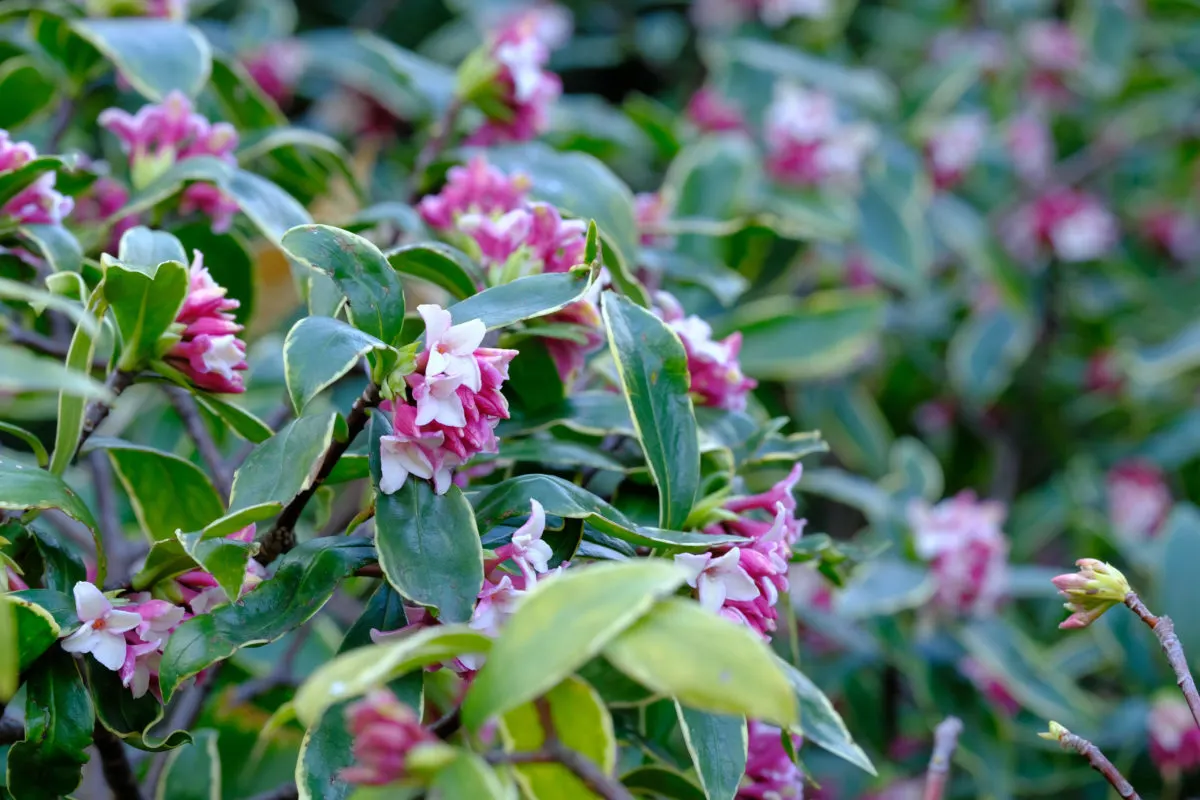
In this article, I covered the most popular plants that bloom on old wood and should be left unpruned in the spring. But I know there are so many others that I didn’t include. So before you cut back your plants in spring, try to think back to when you last saw them in bloom. If you take gardening notes diligently, refer back to them. Photos you took of your garden in previous years will also help to jog your memory. If your plants flower any time between January and April, chances are they do so on old wood.
Remember this: Old wood bloom = don’t prune.


